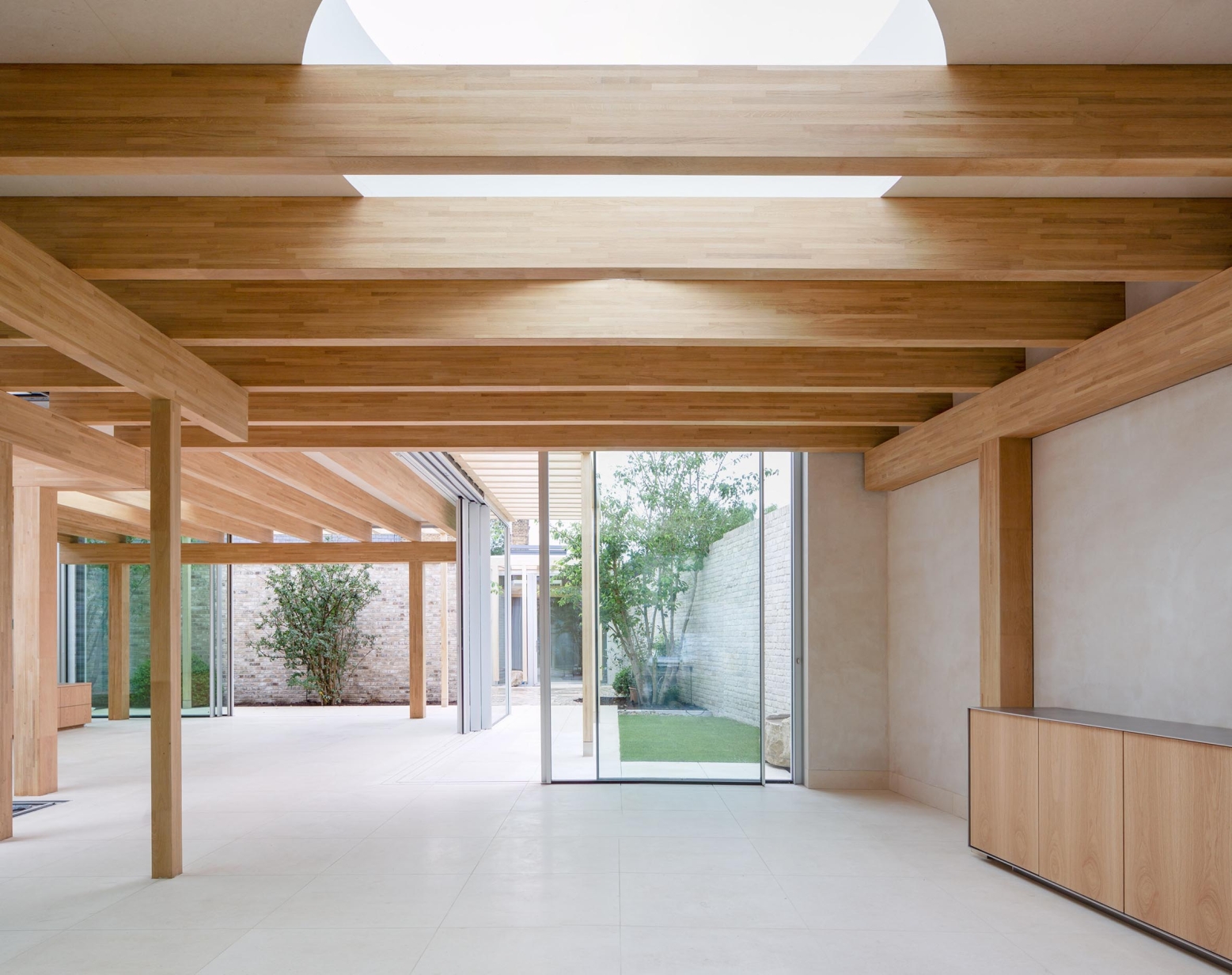
Niwa House
Nestling within a once derelict plot in South London, behind a row of terraced houses and at the end of a narrow access lane, Niwa House is a new build accessible home for a young family.
The client’s connection with Japan inspired a relationship between the house and the garden (niwa) rather like the concept of engawa, a covered corridor running along the perimeter of traditional Japanese dwellings. The house is conceived as a lightweight pavilion – a continuous series of open plan spaces interrupted by courtyards and the garden forming a unique figurative shape that fits within as-found vacant land.
The hybrid timber and stone structure is expressed through glulam columns spanning both storeys to meet a network of stacked beams, primitive in nature. These support and work in tandem with a thick limestone ceiling providing thermal mass and rigidity. Light enters overhead, filtered through beams and sheer curtains.
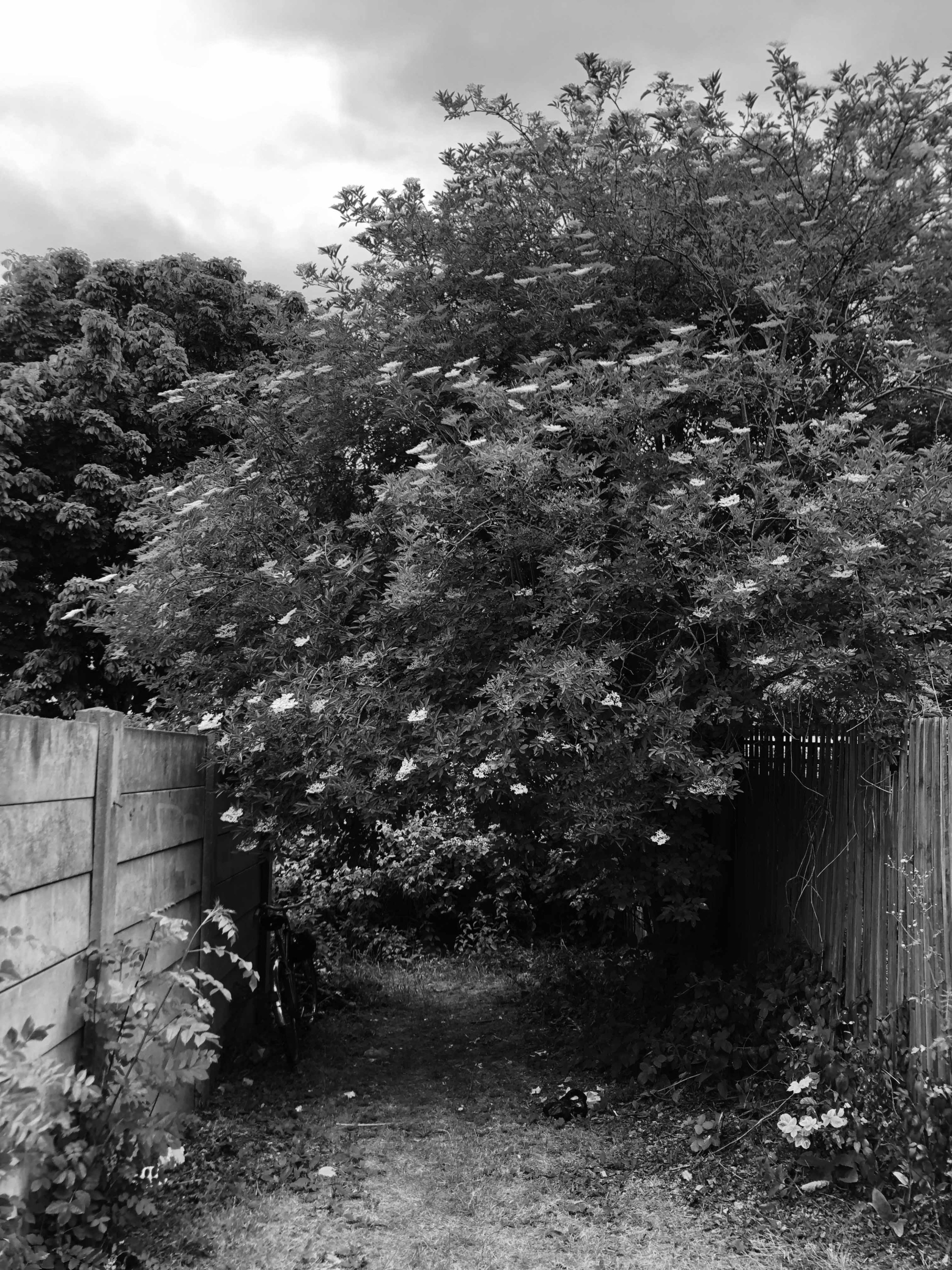
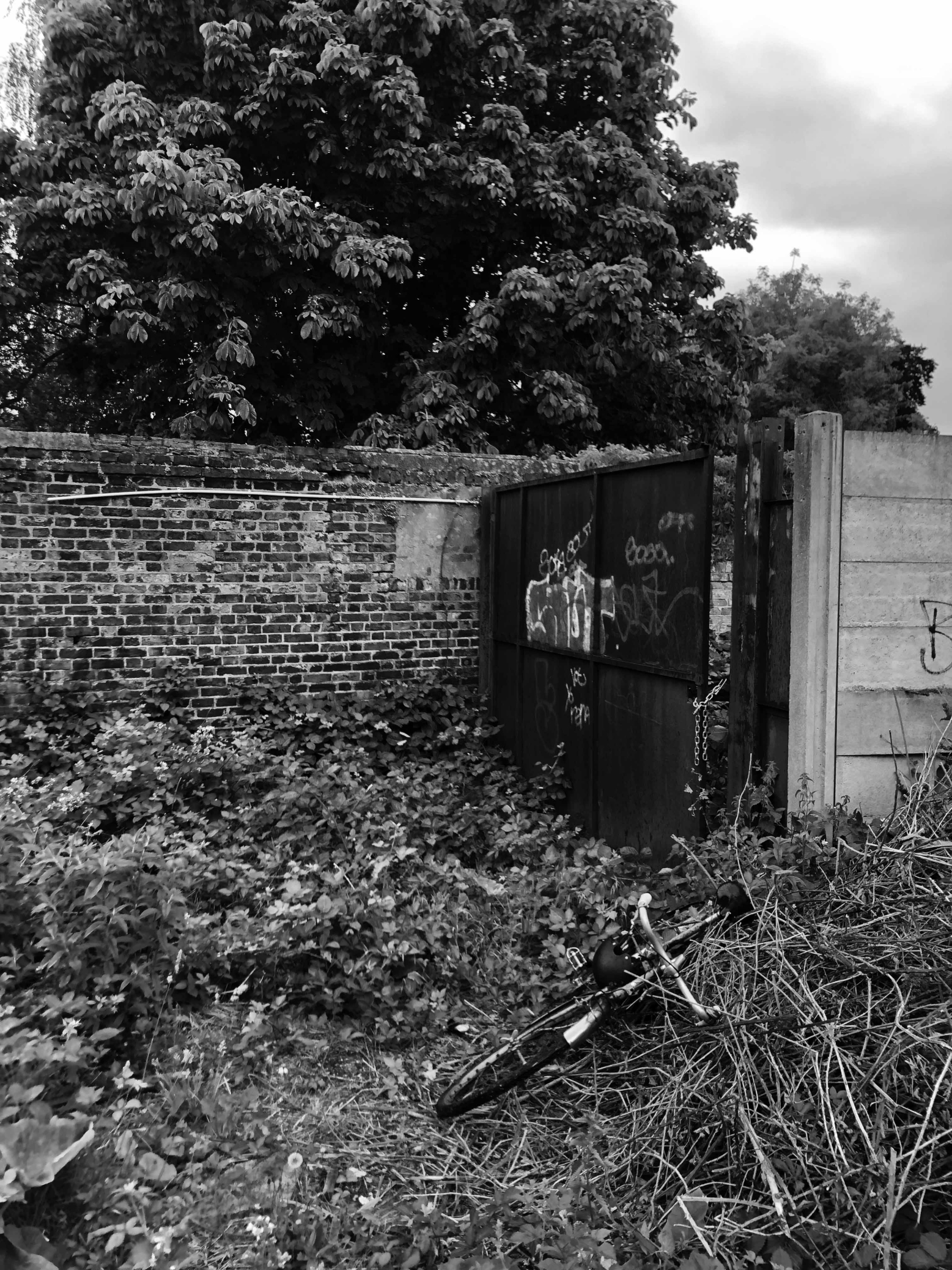


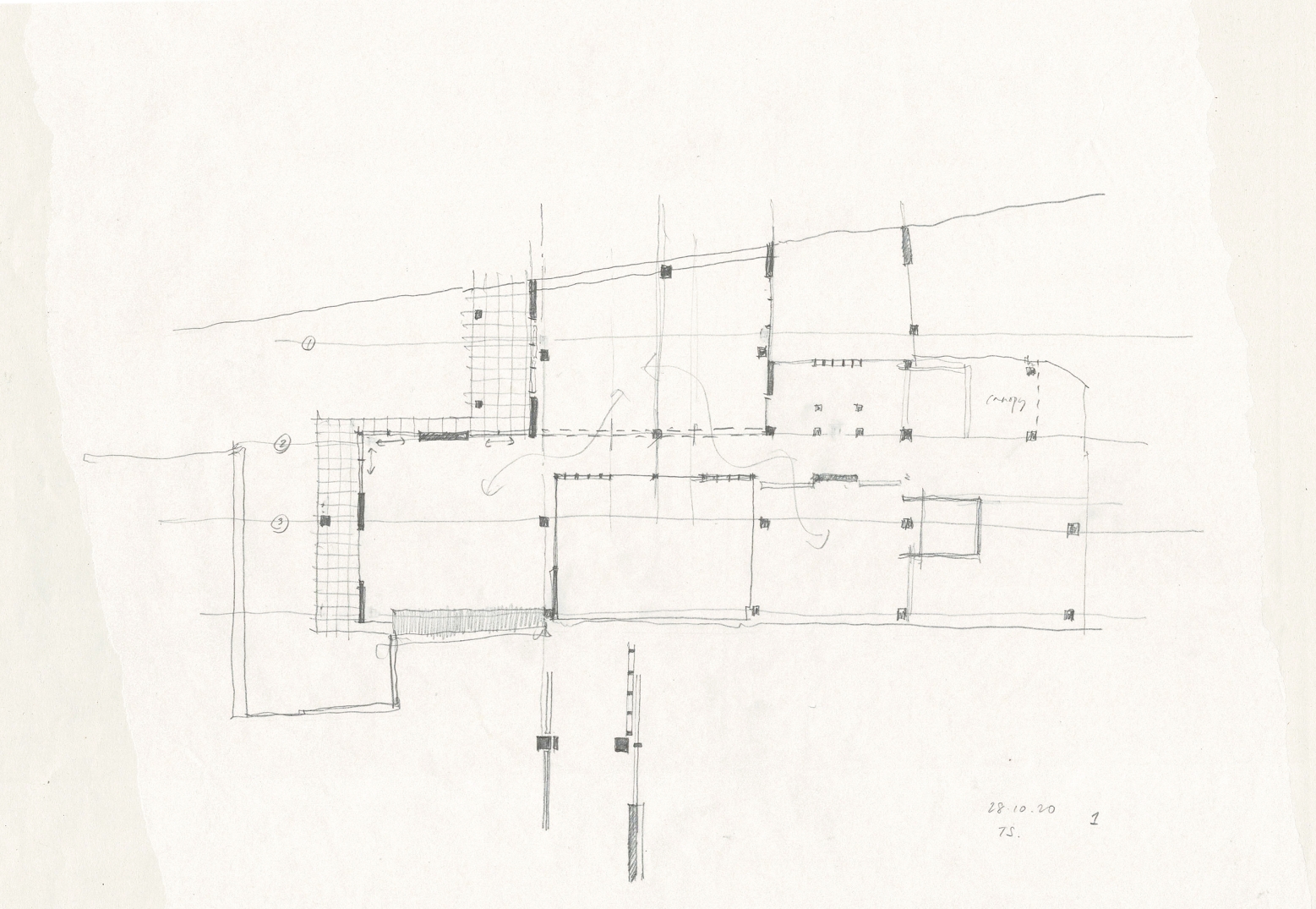
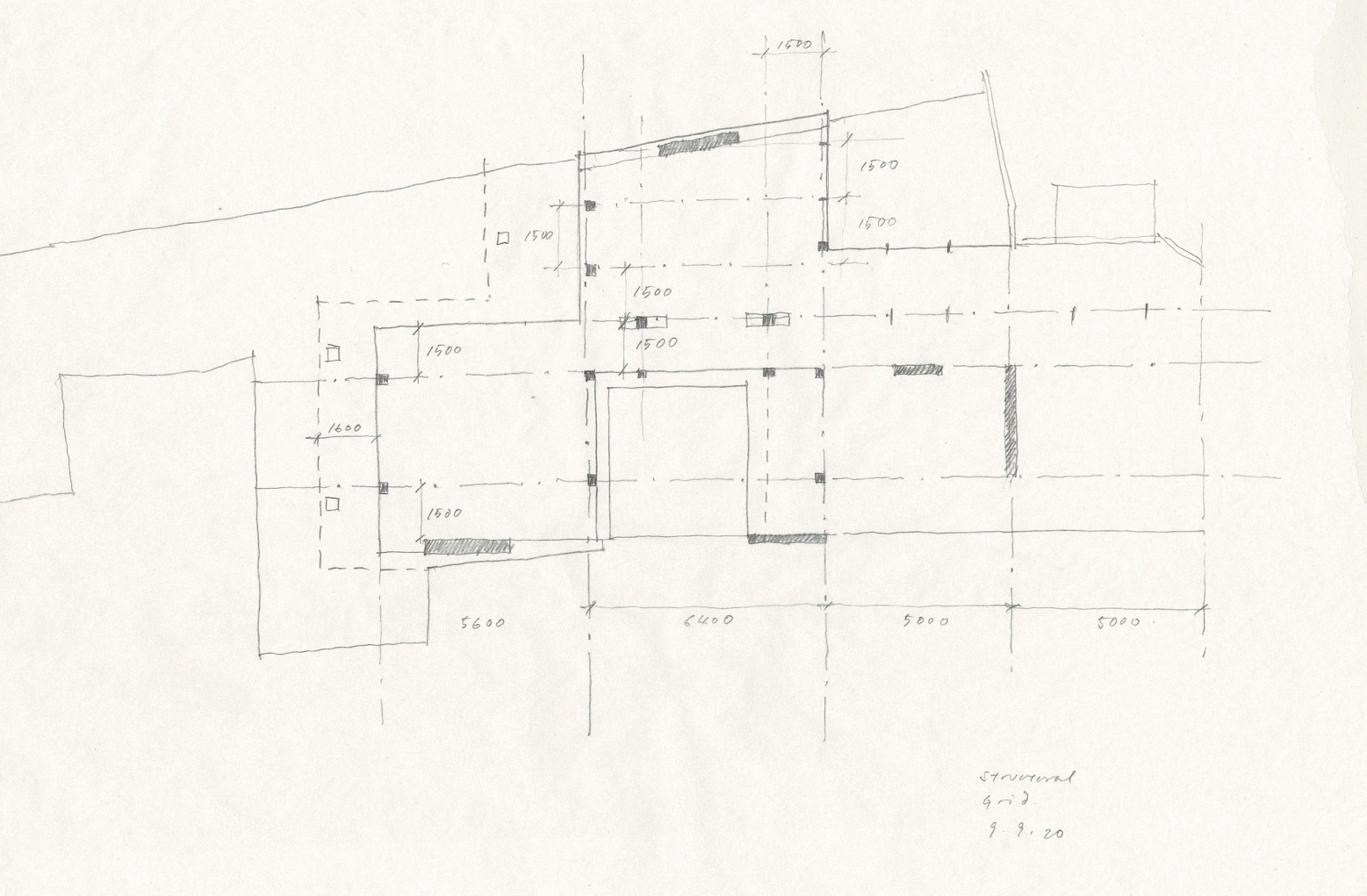
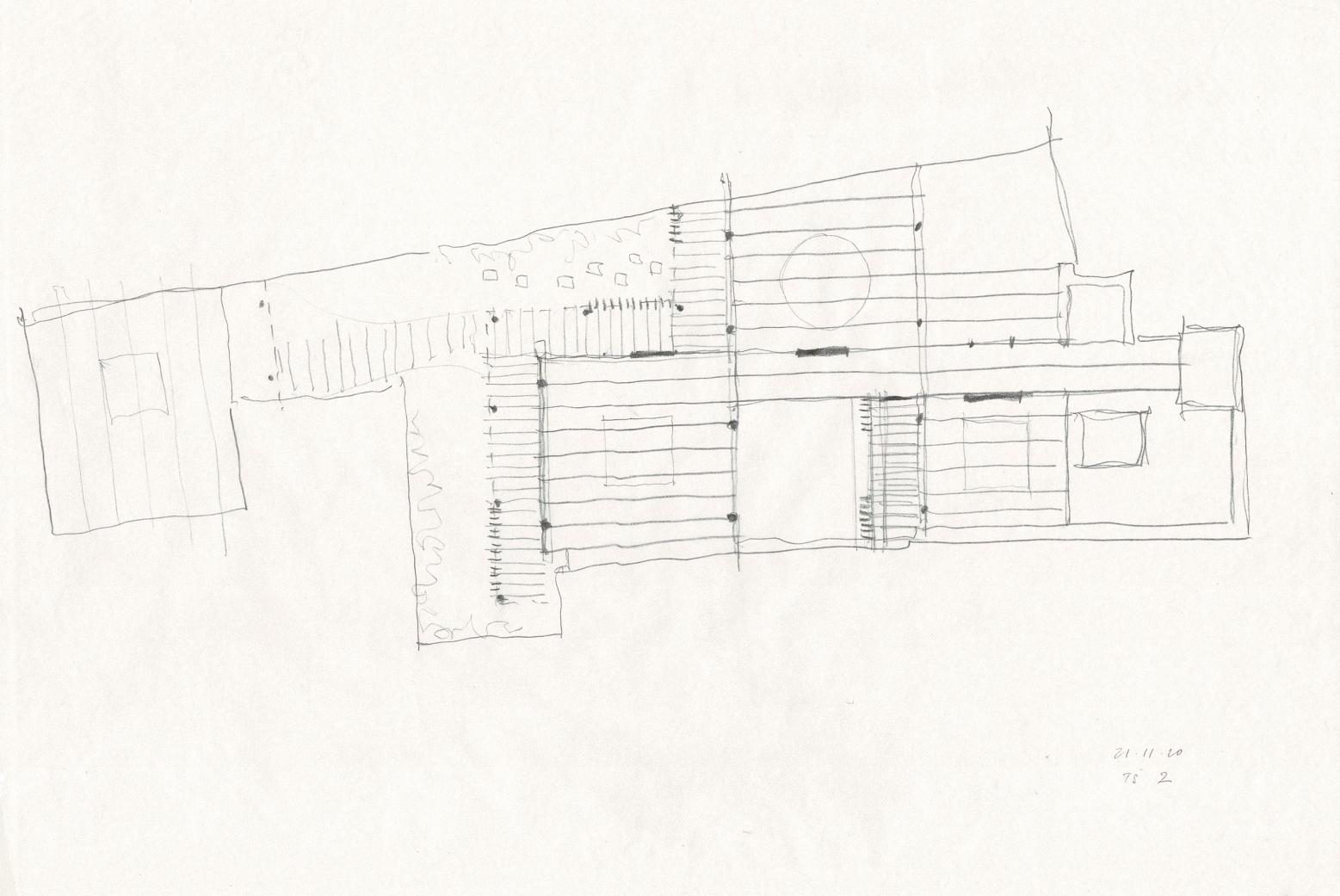

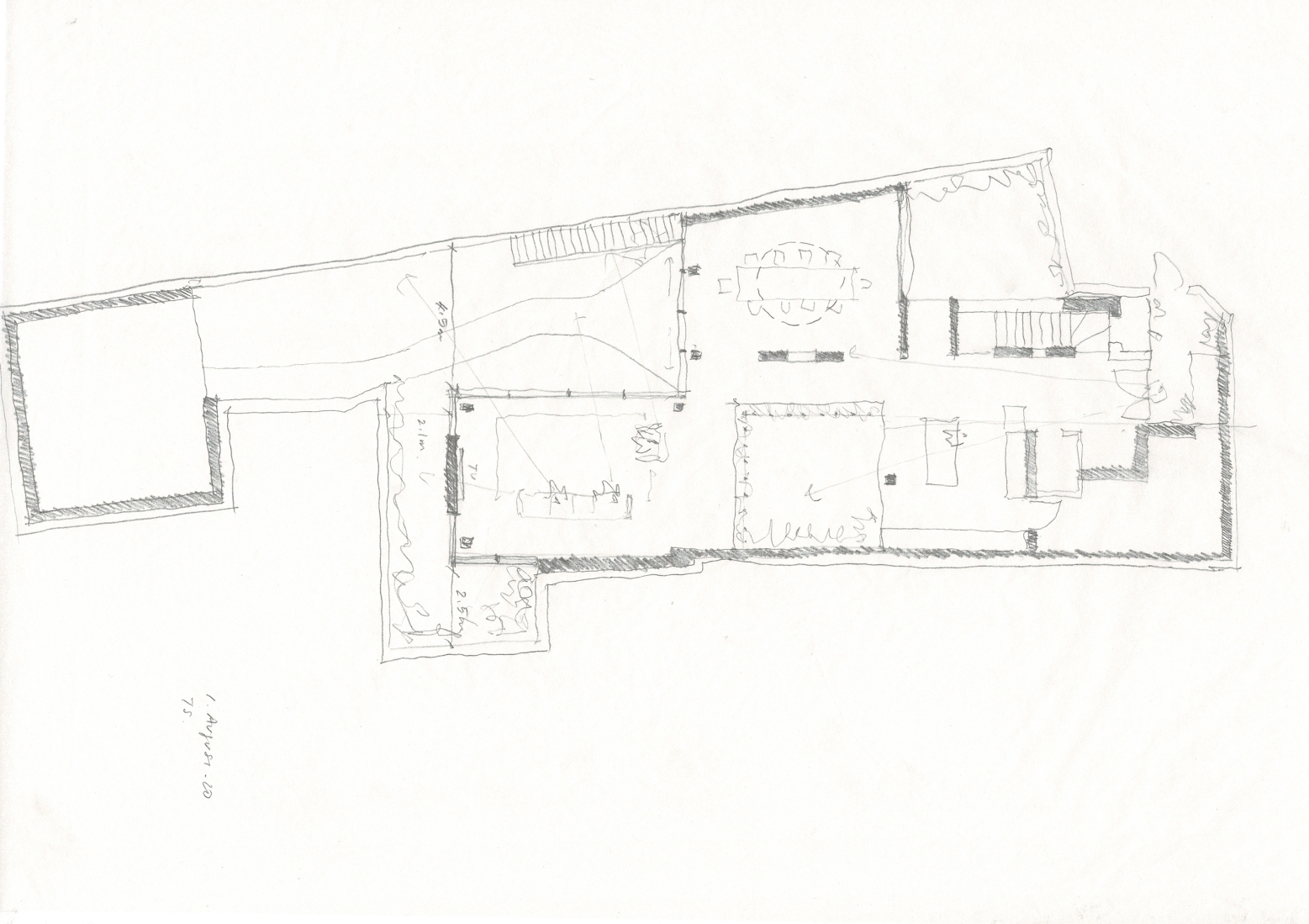
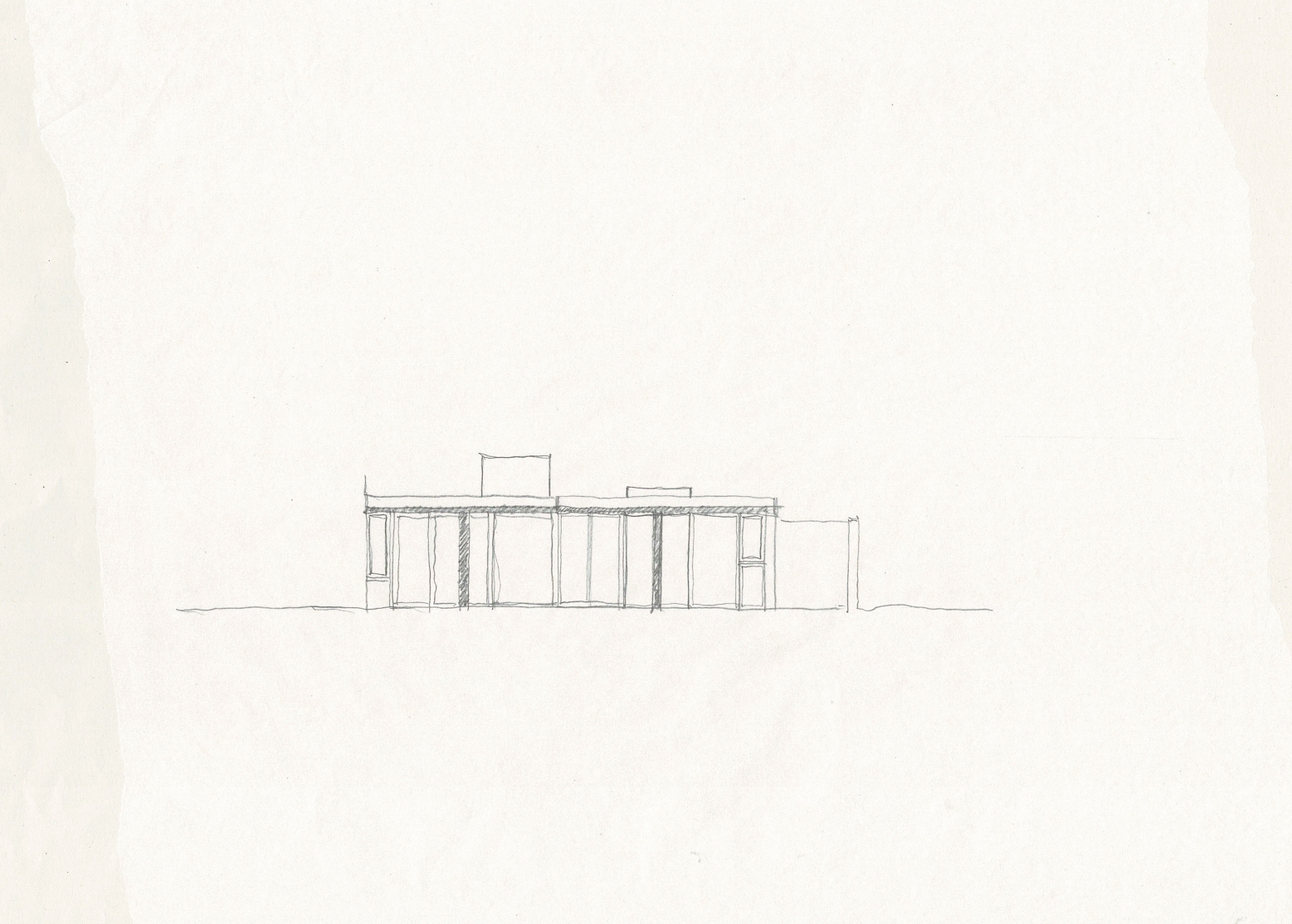
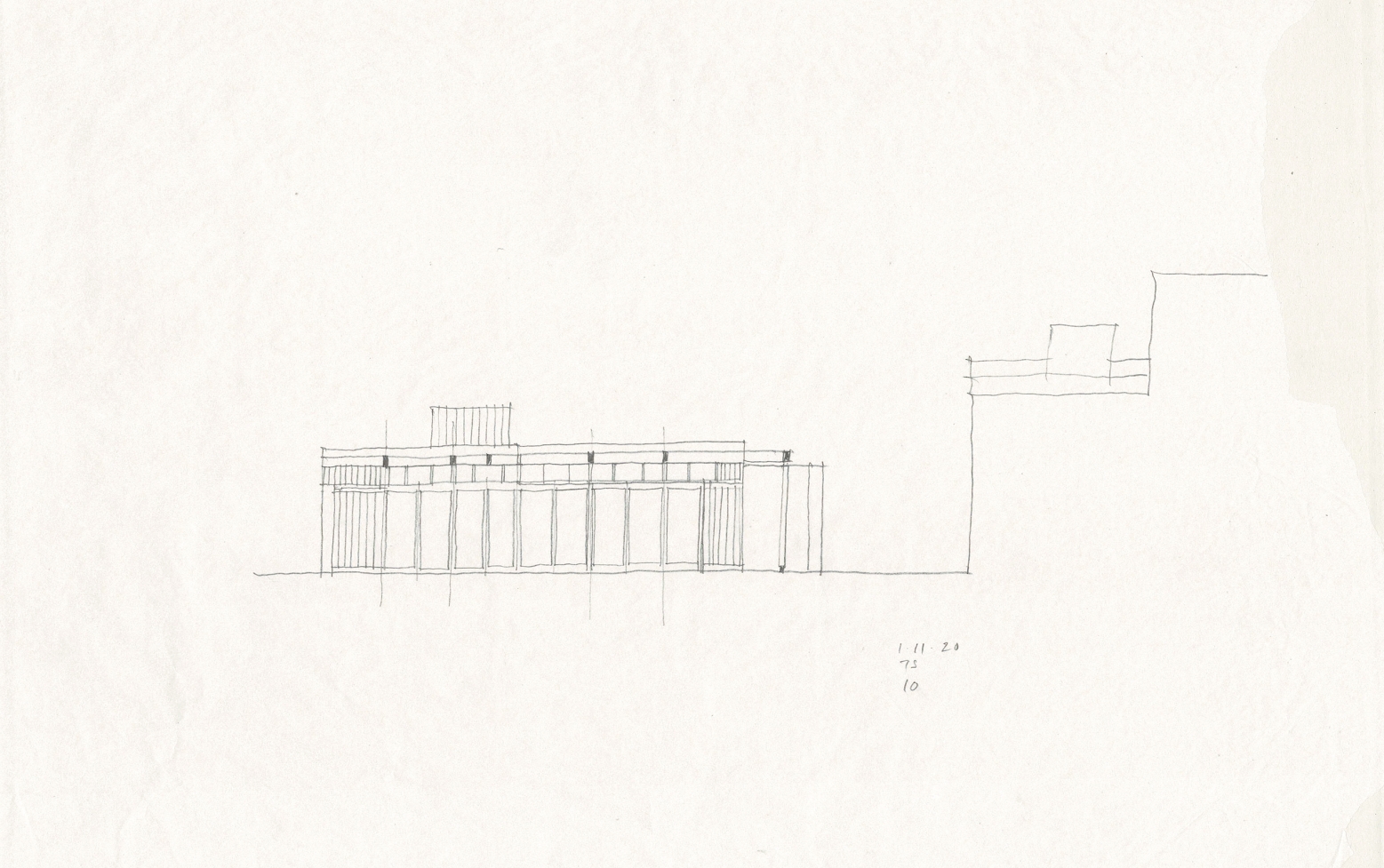
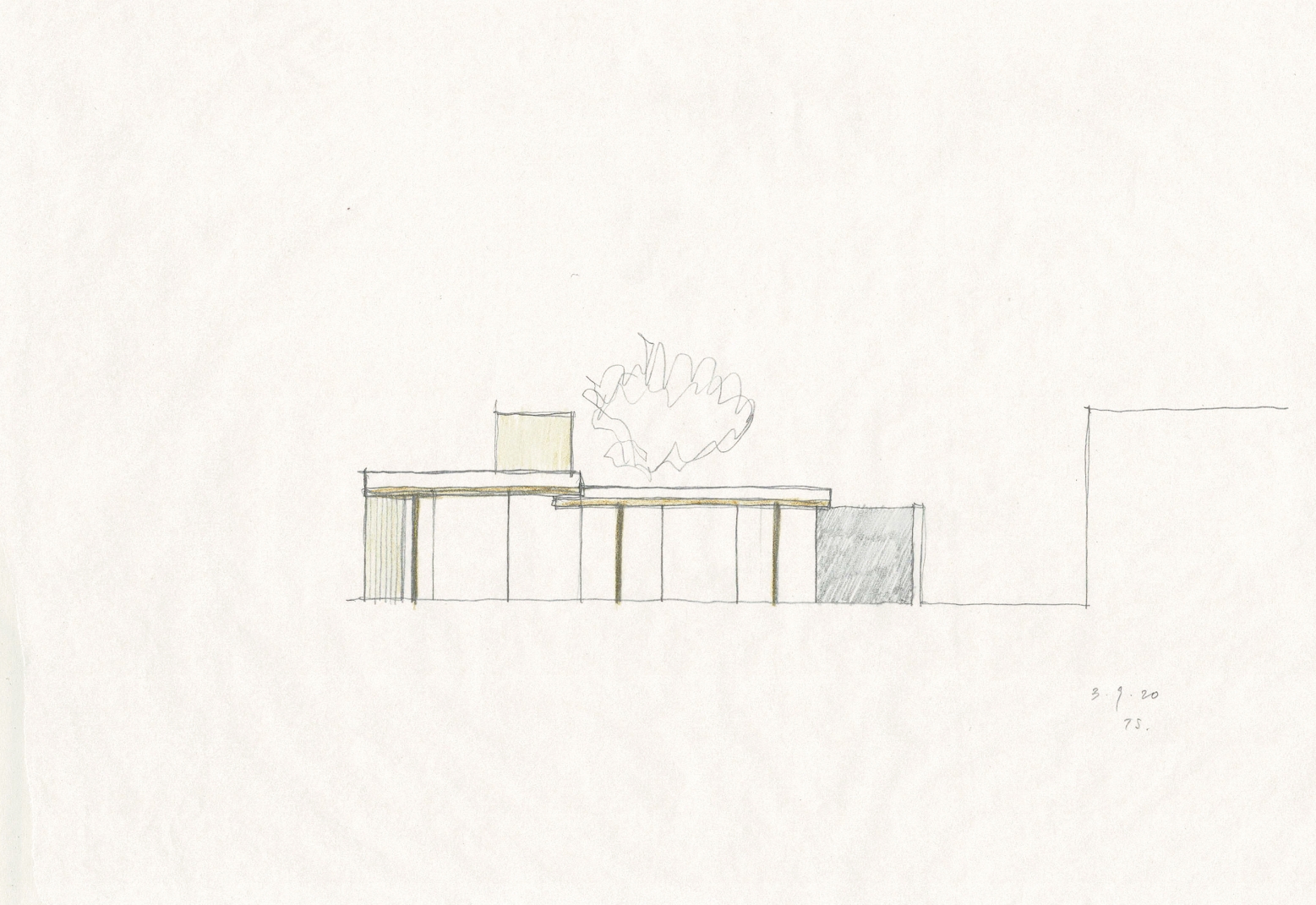
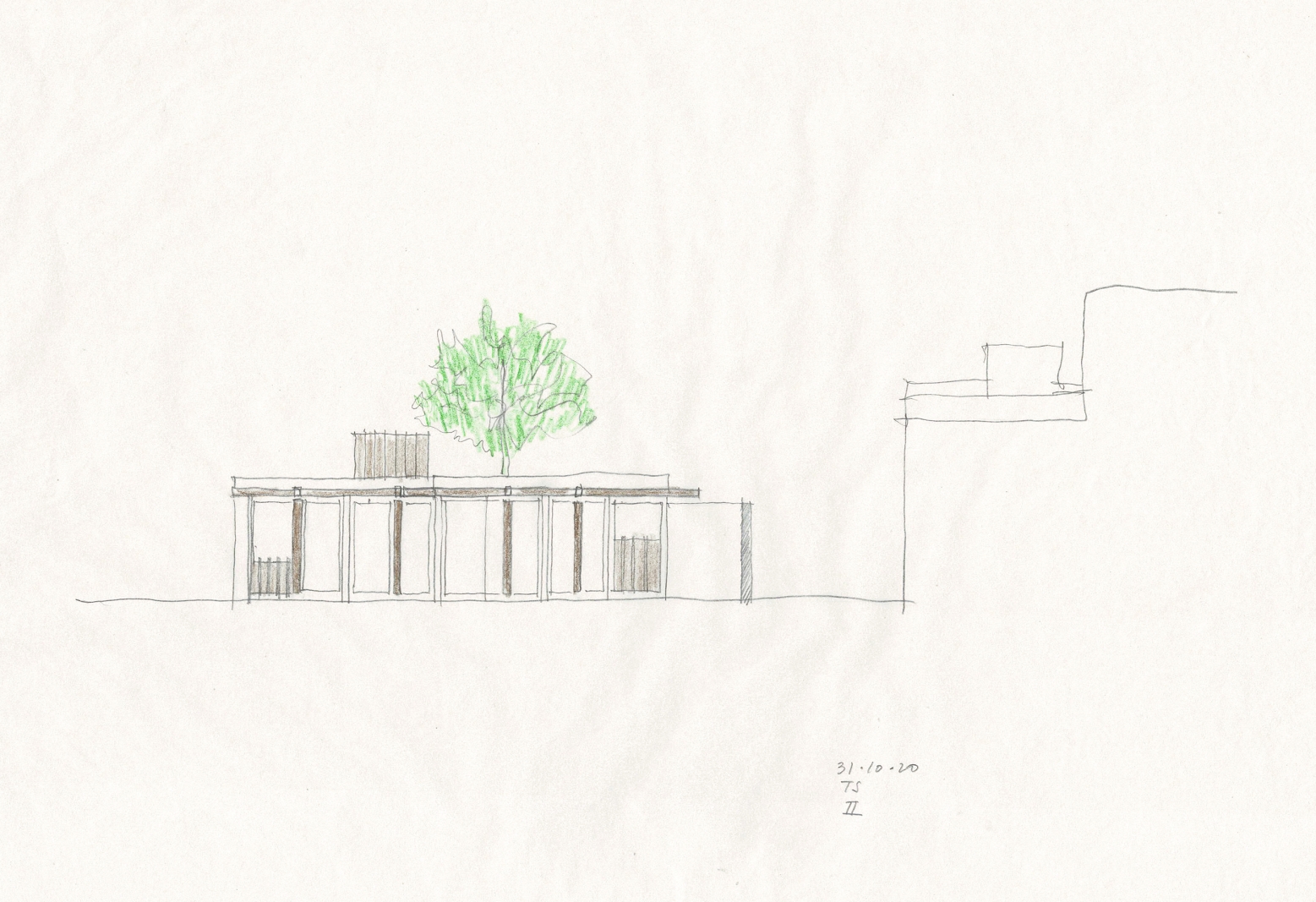

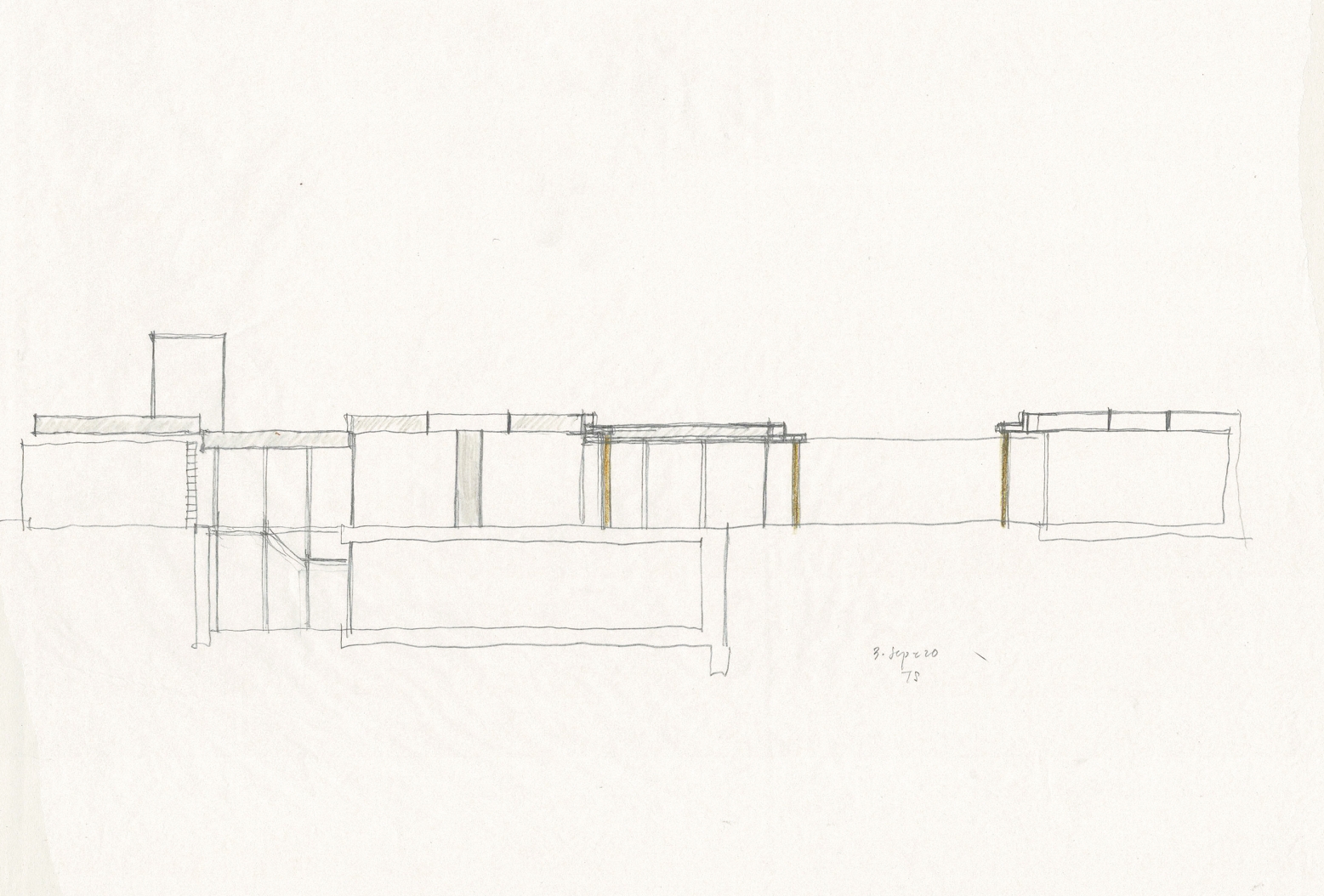
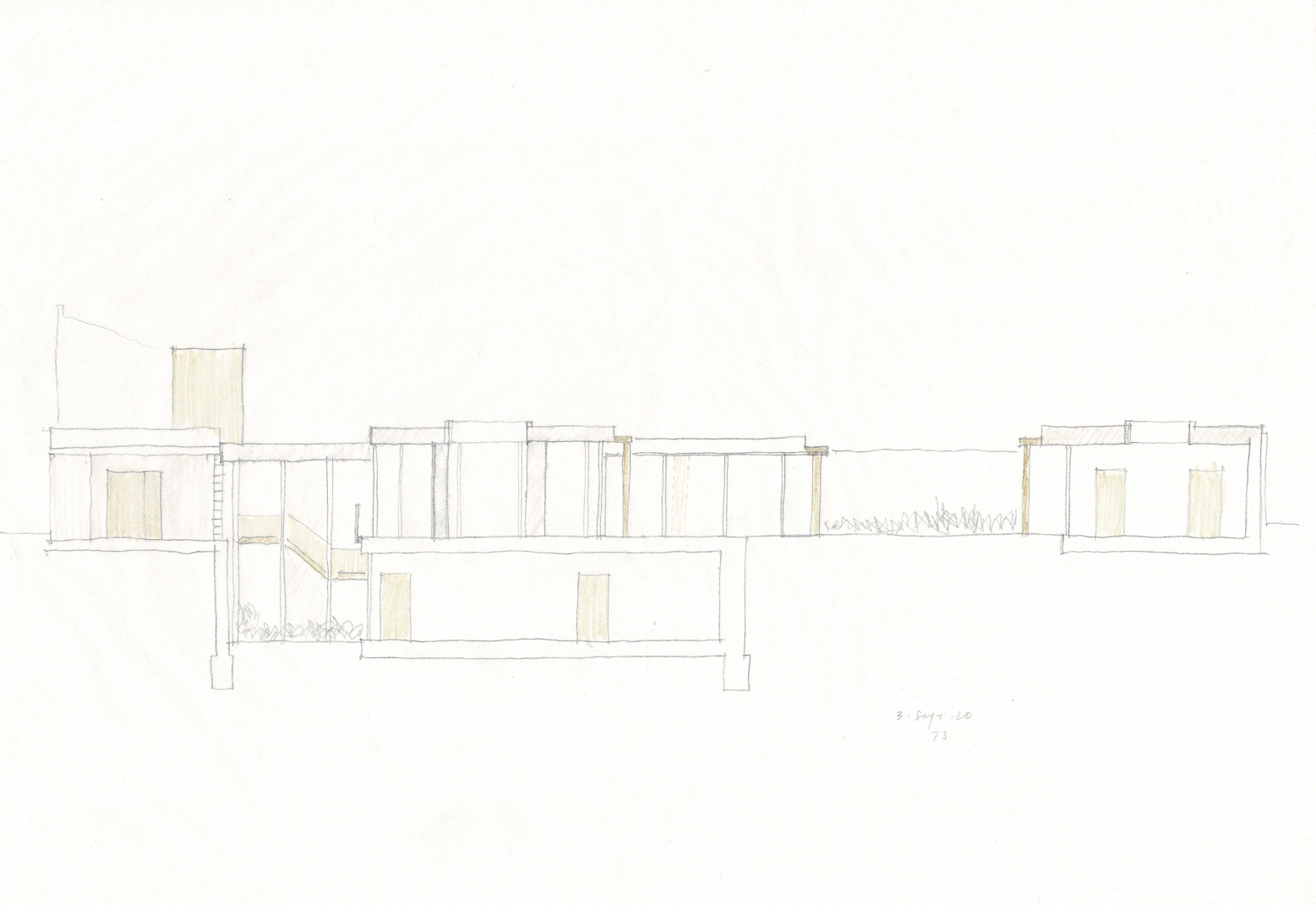
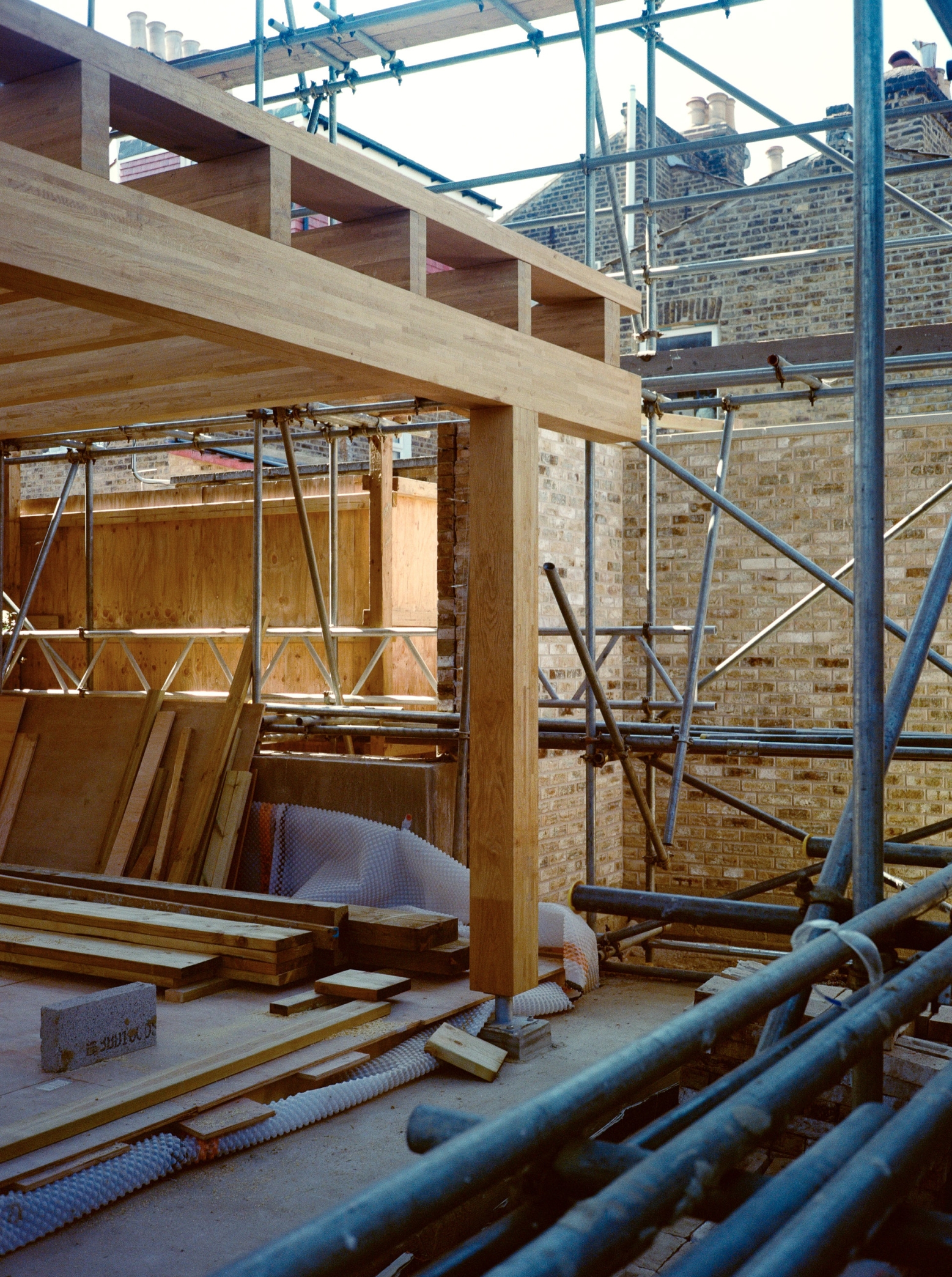
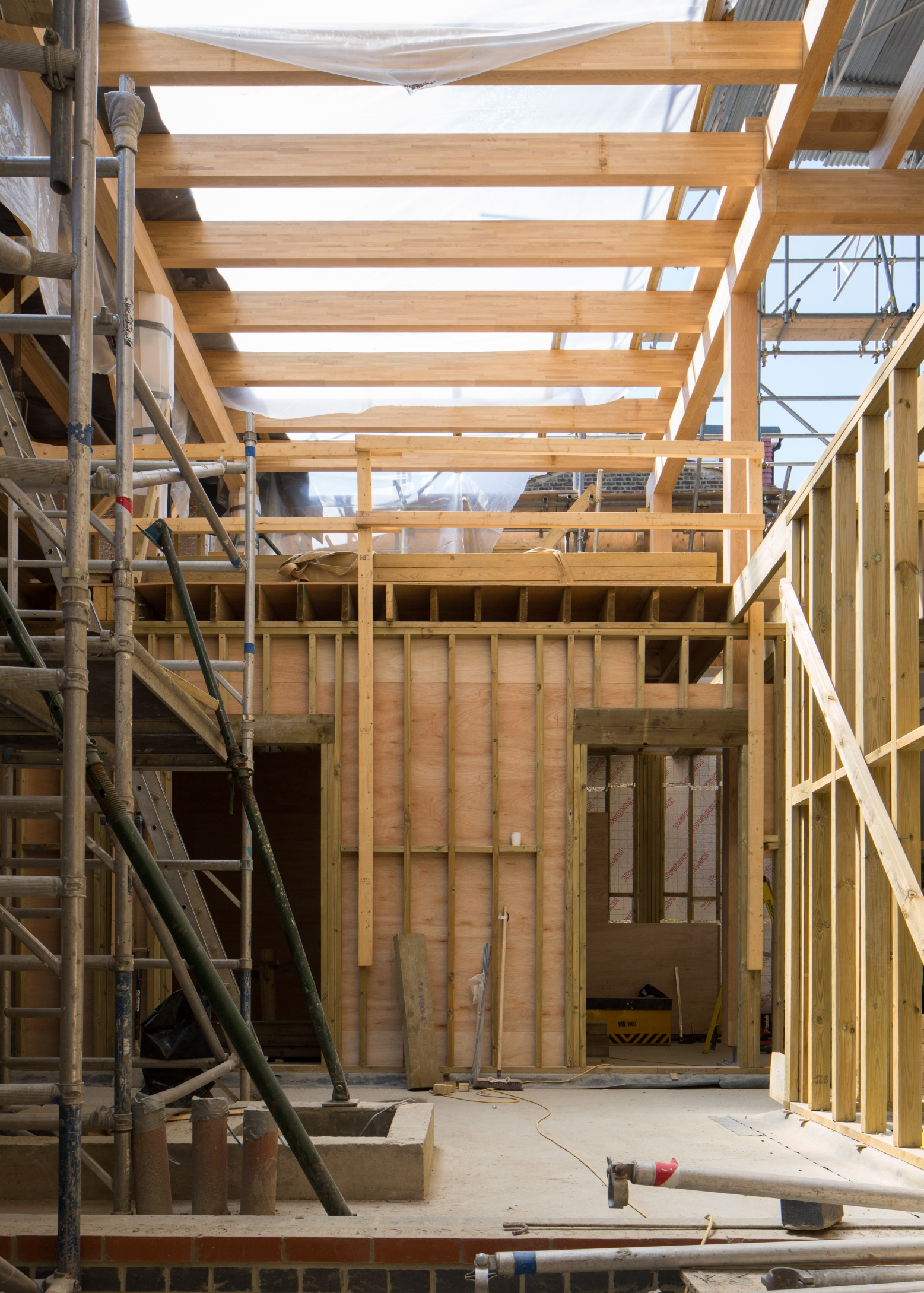
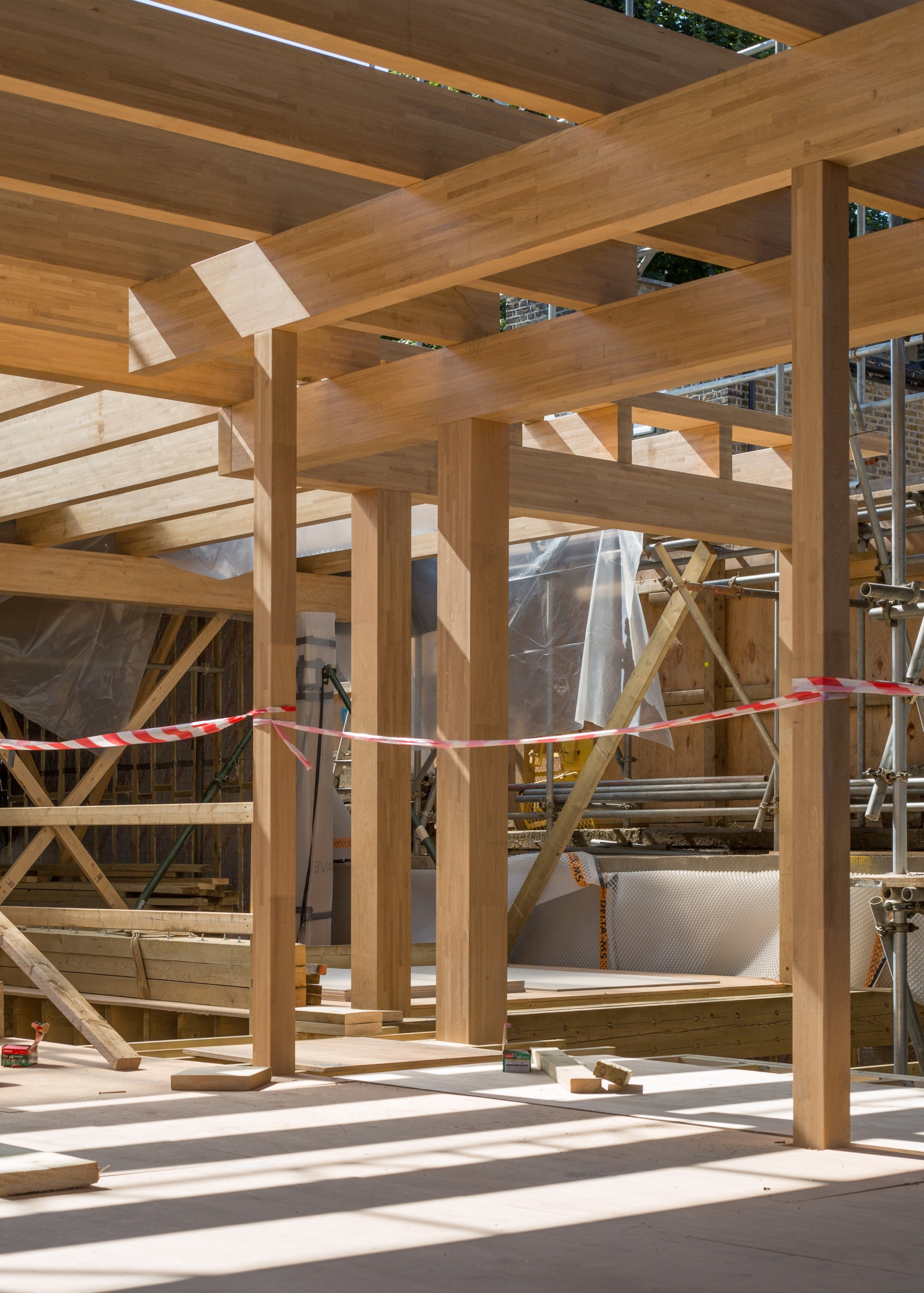
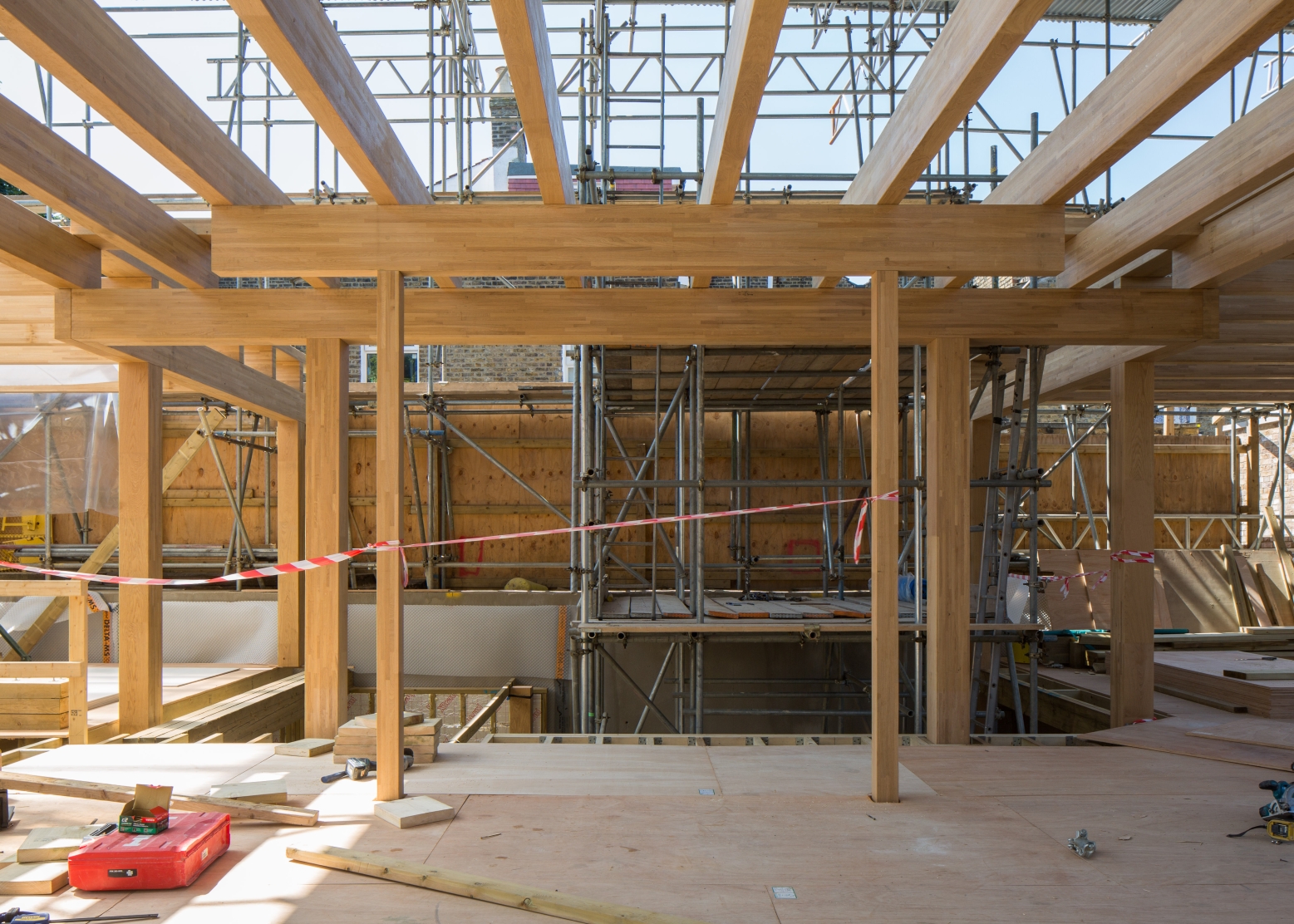
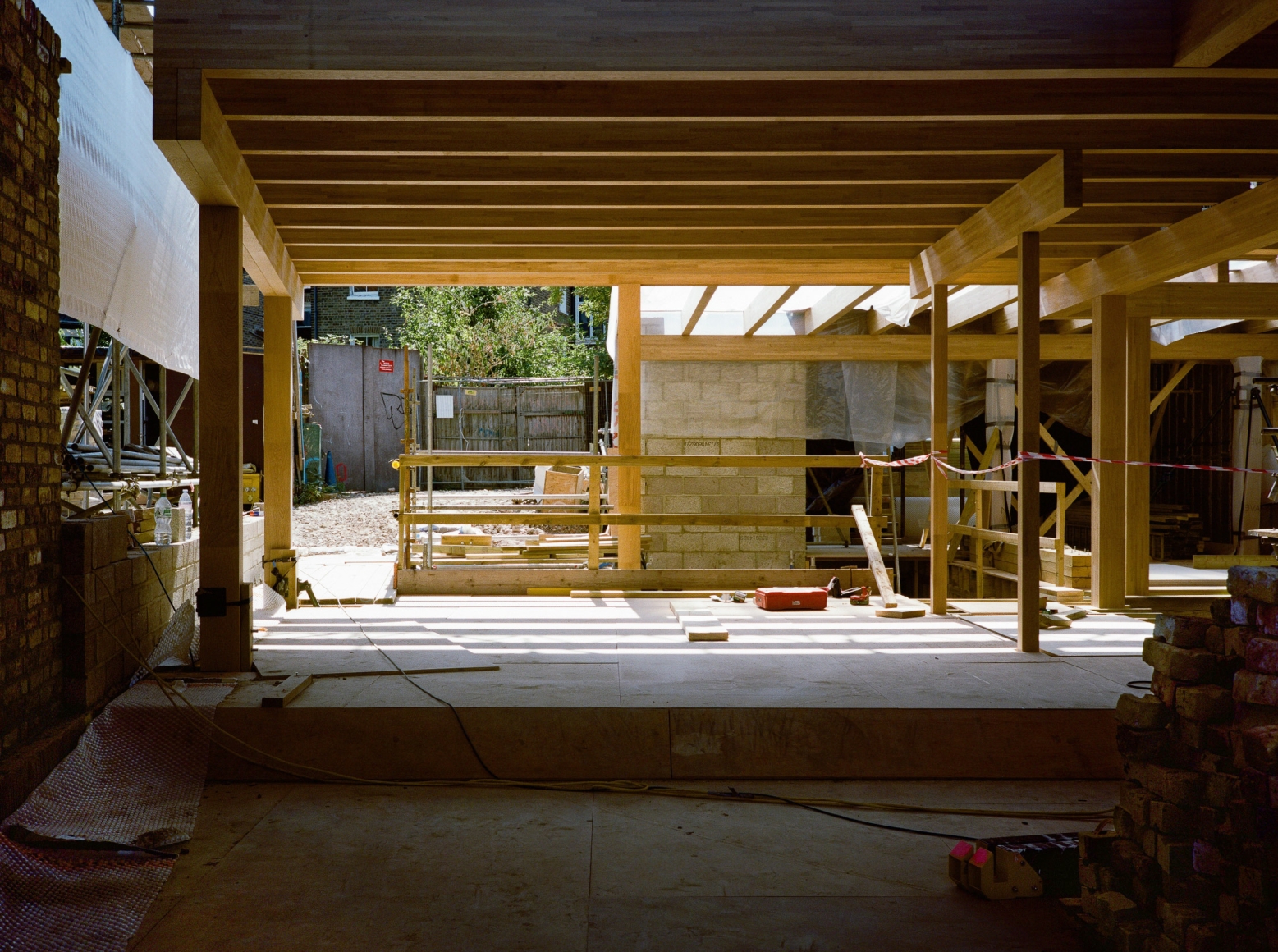

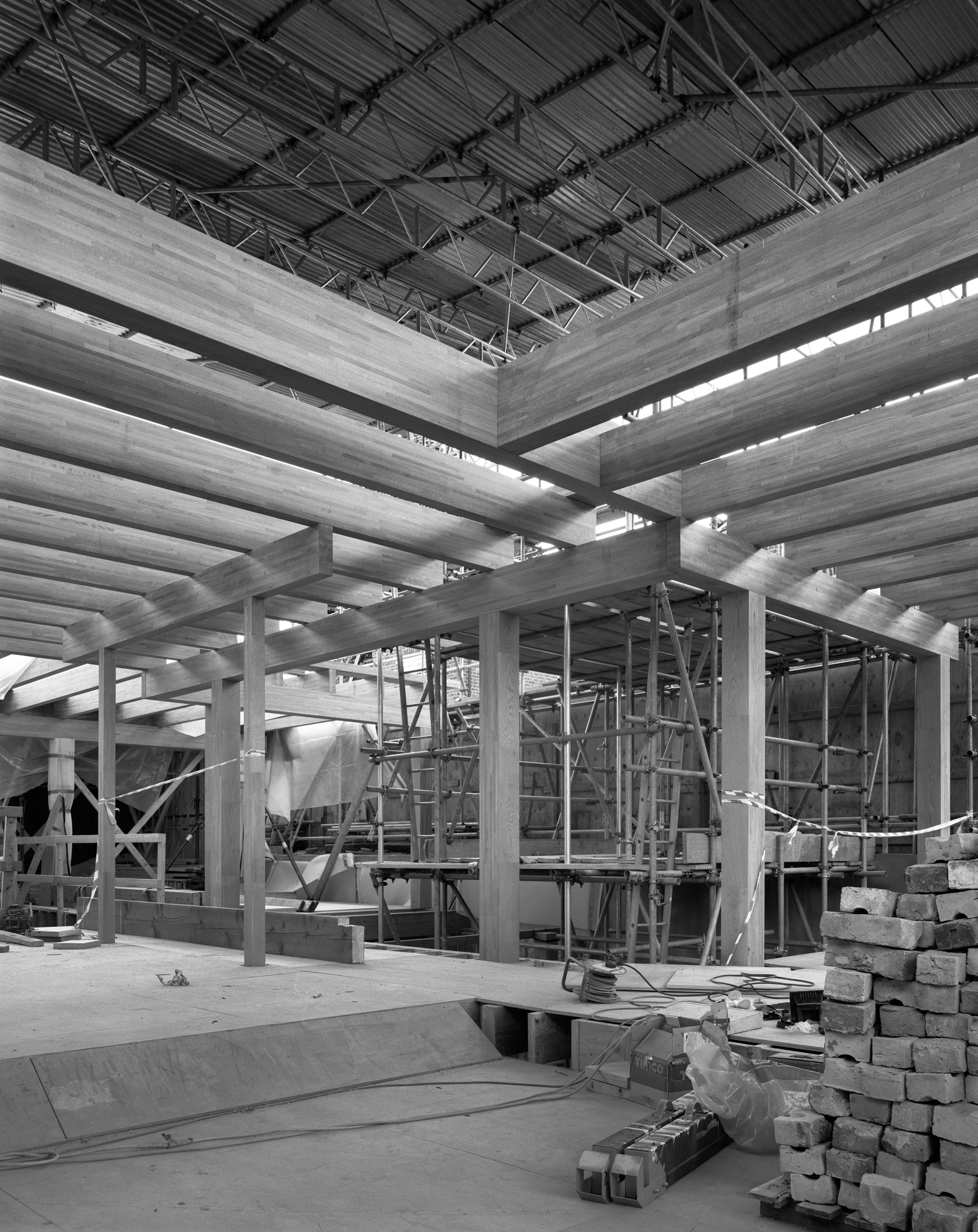
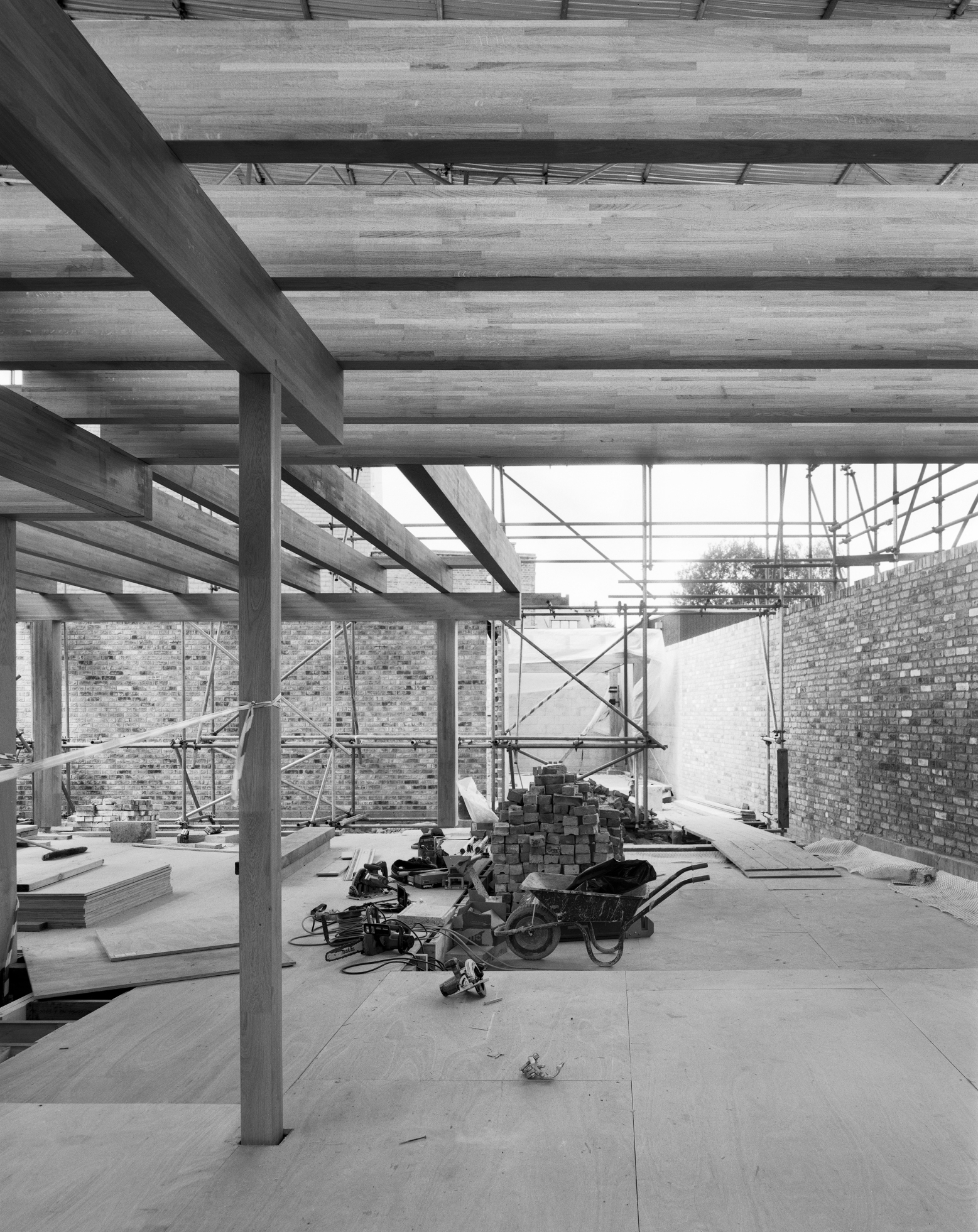
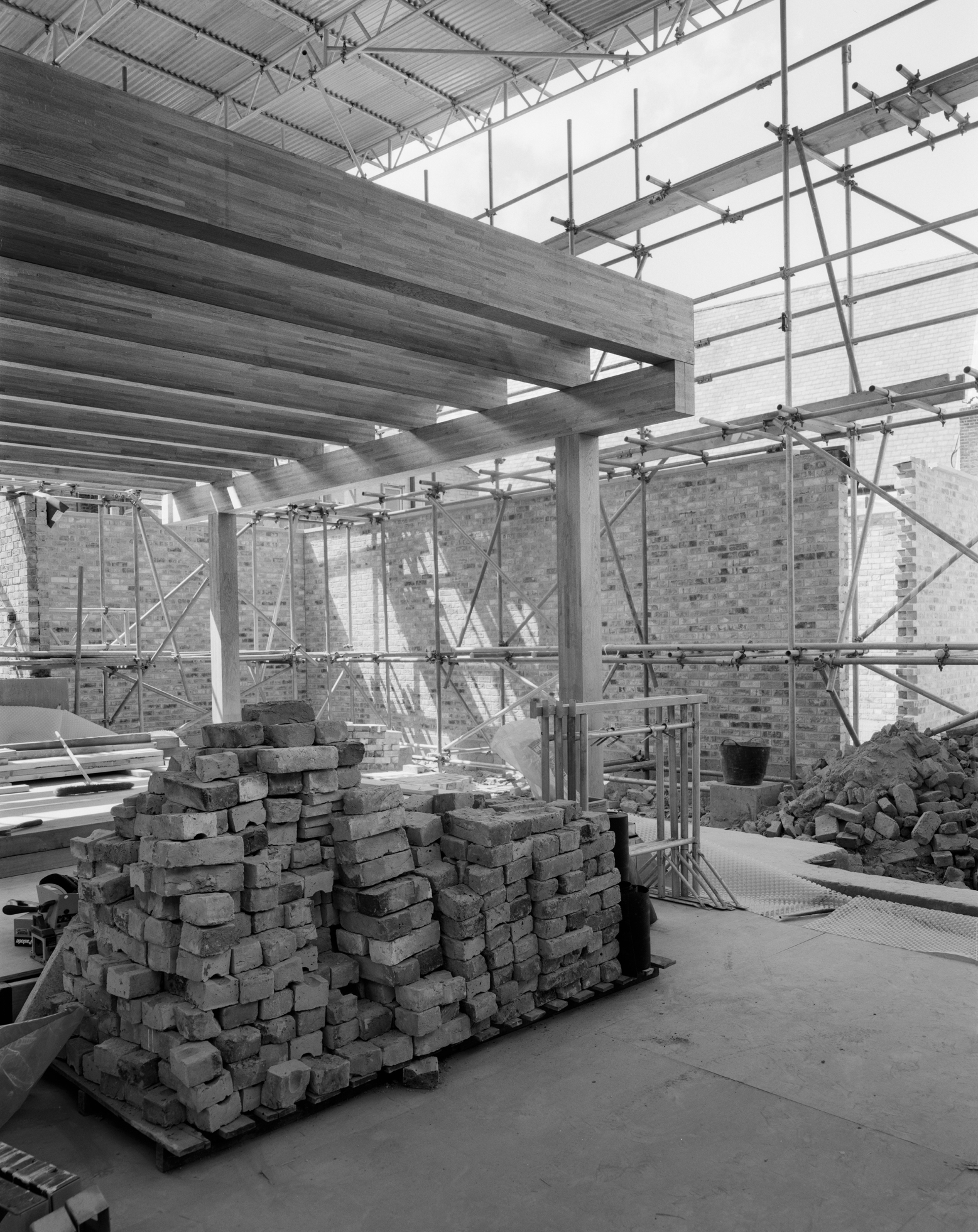

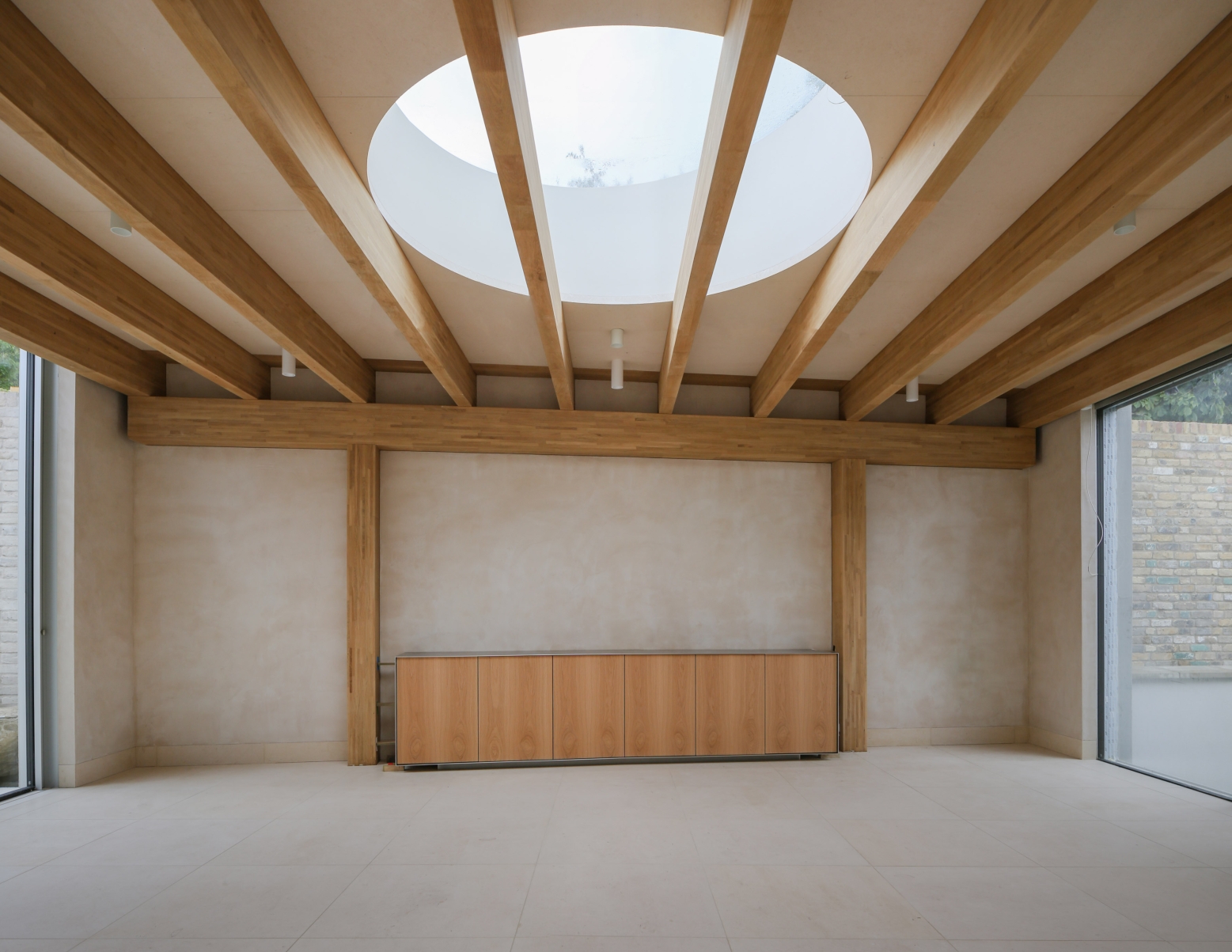
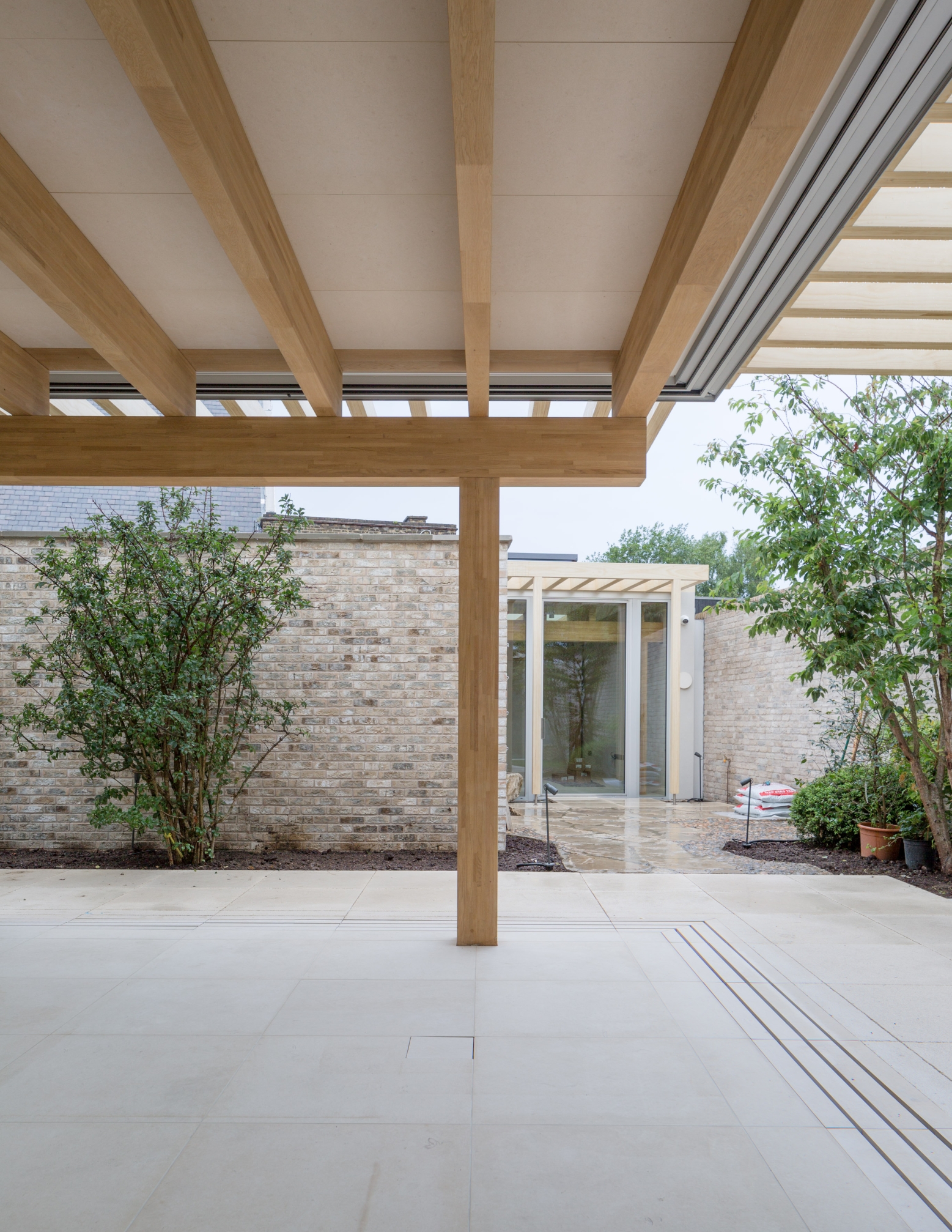
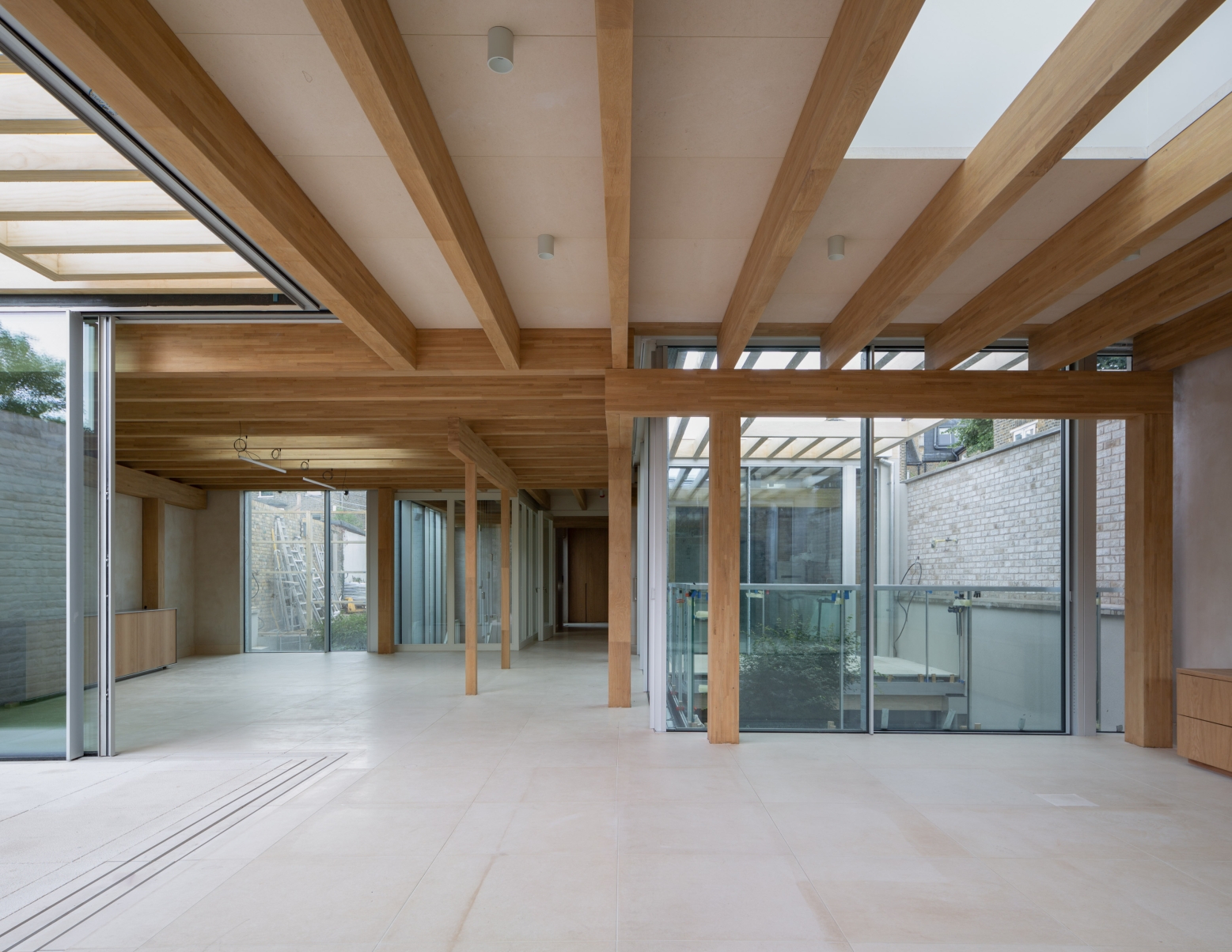

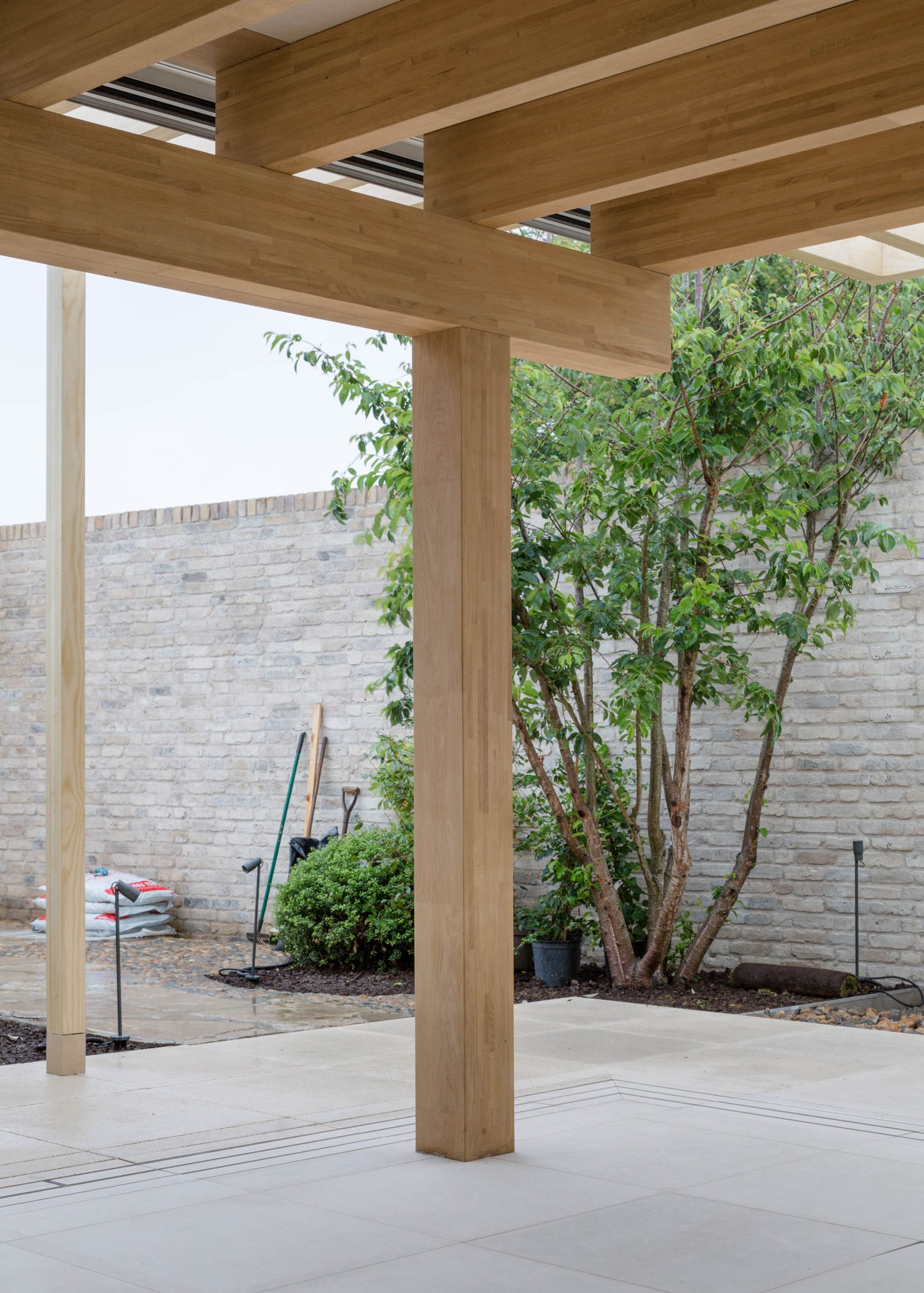
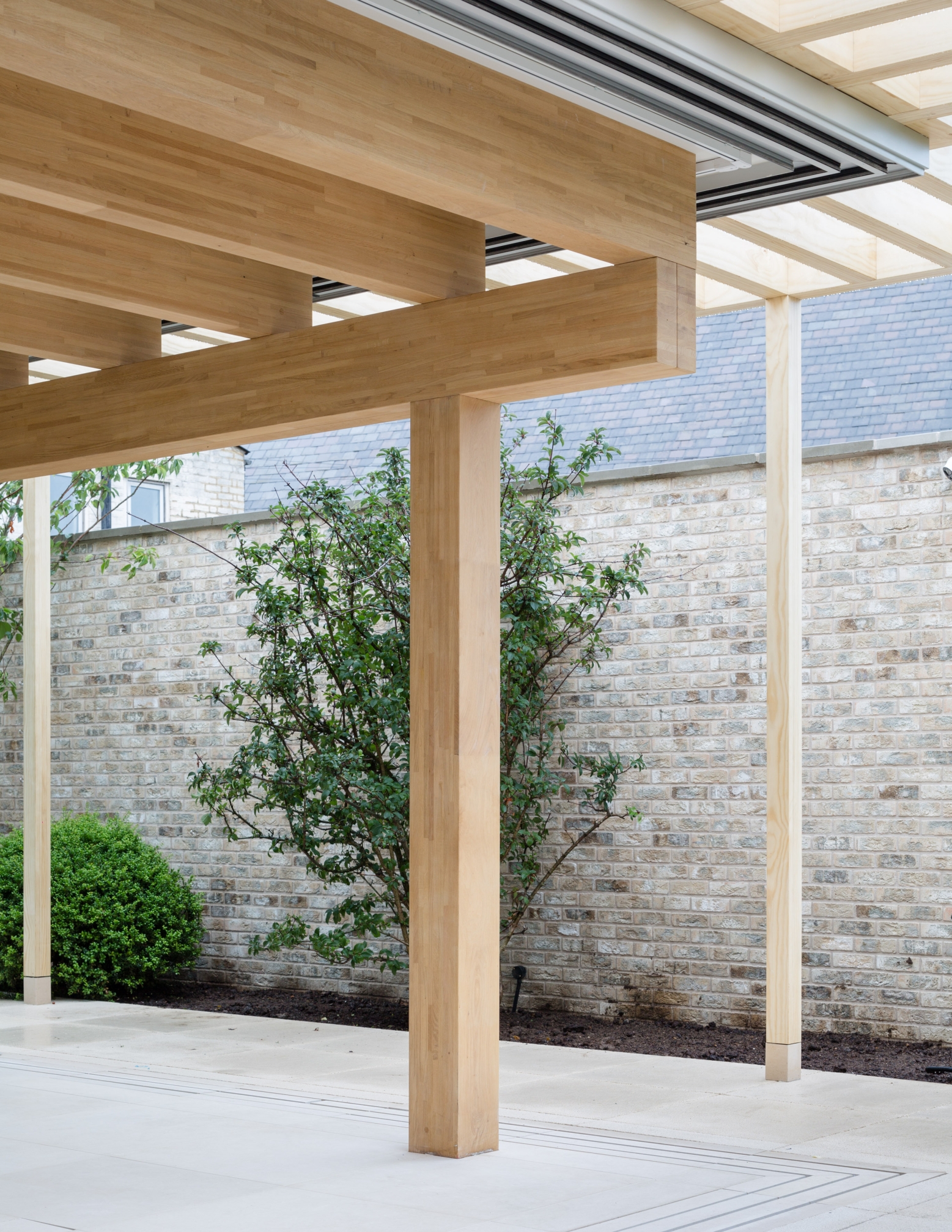
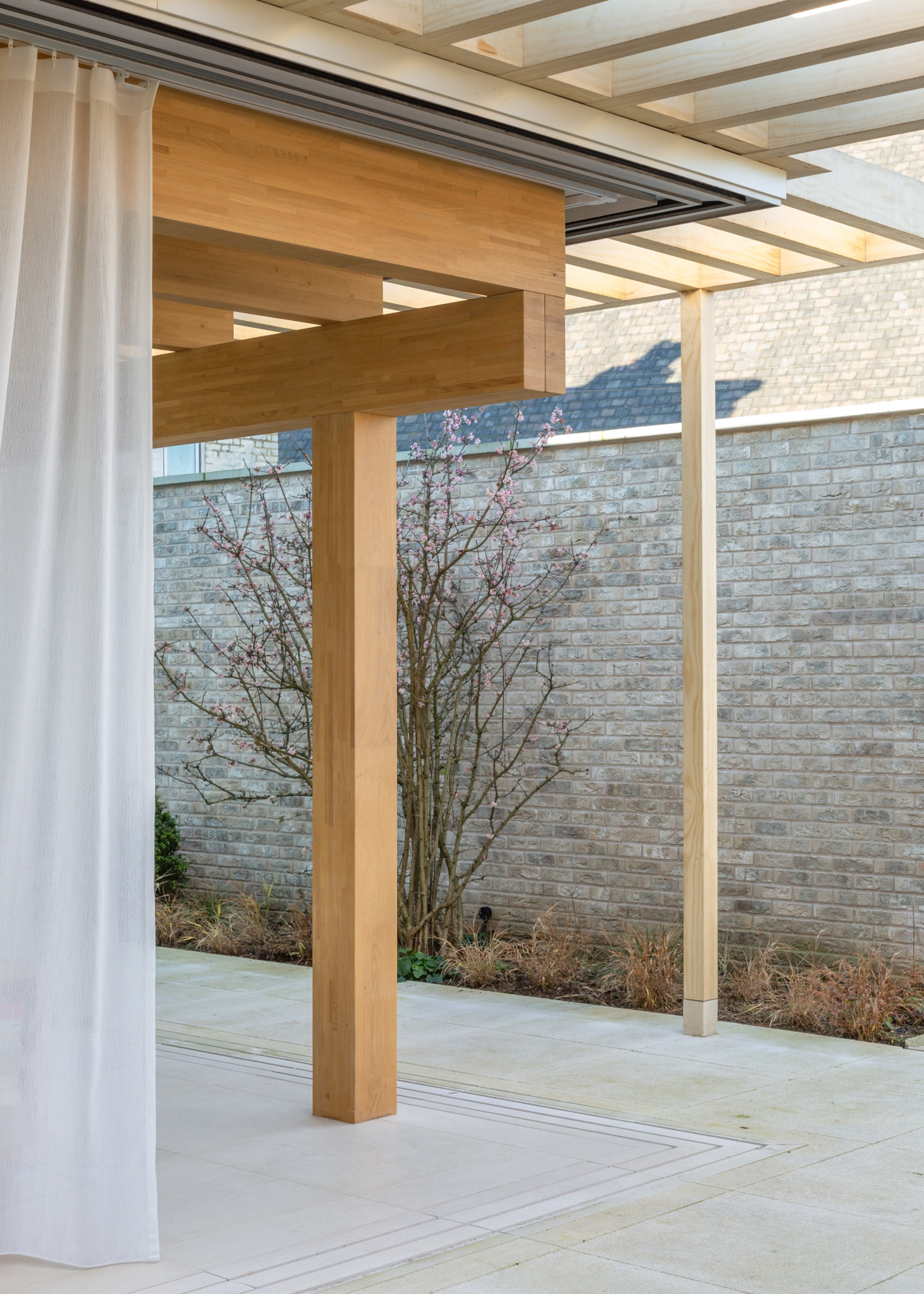
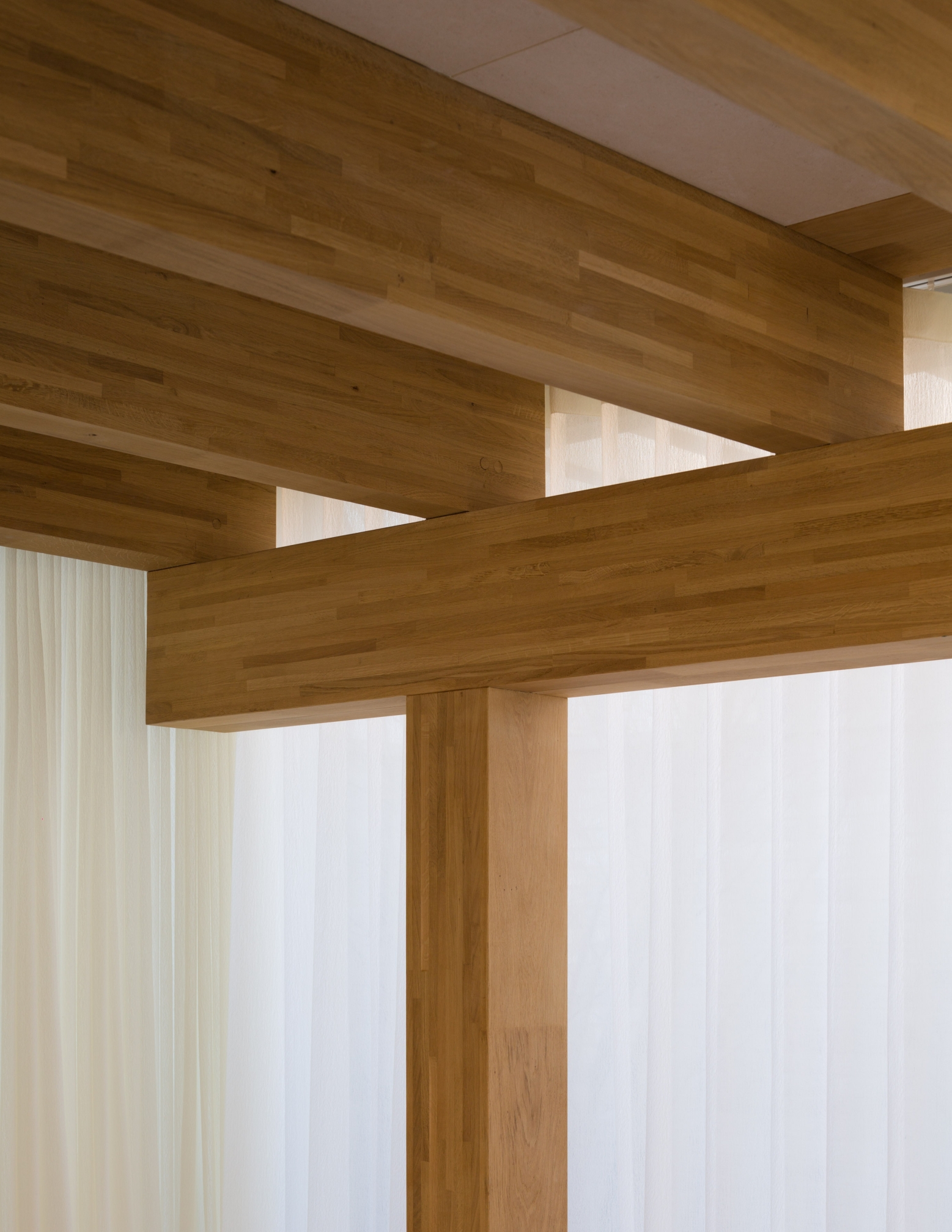
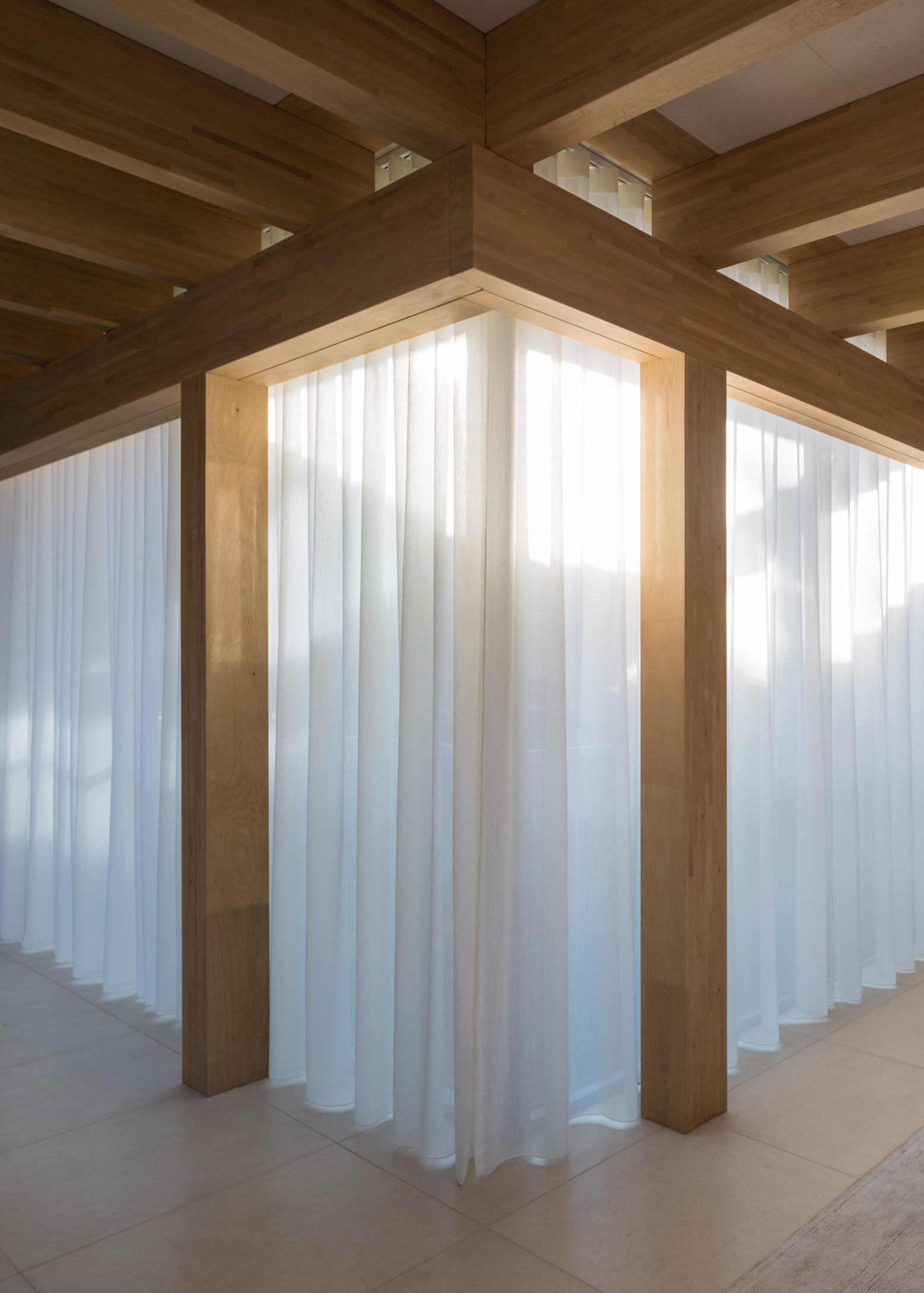

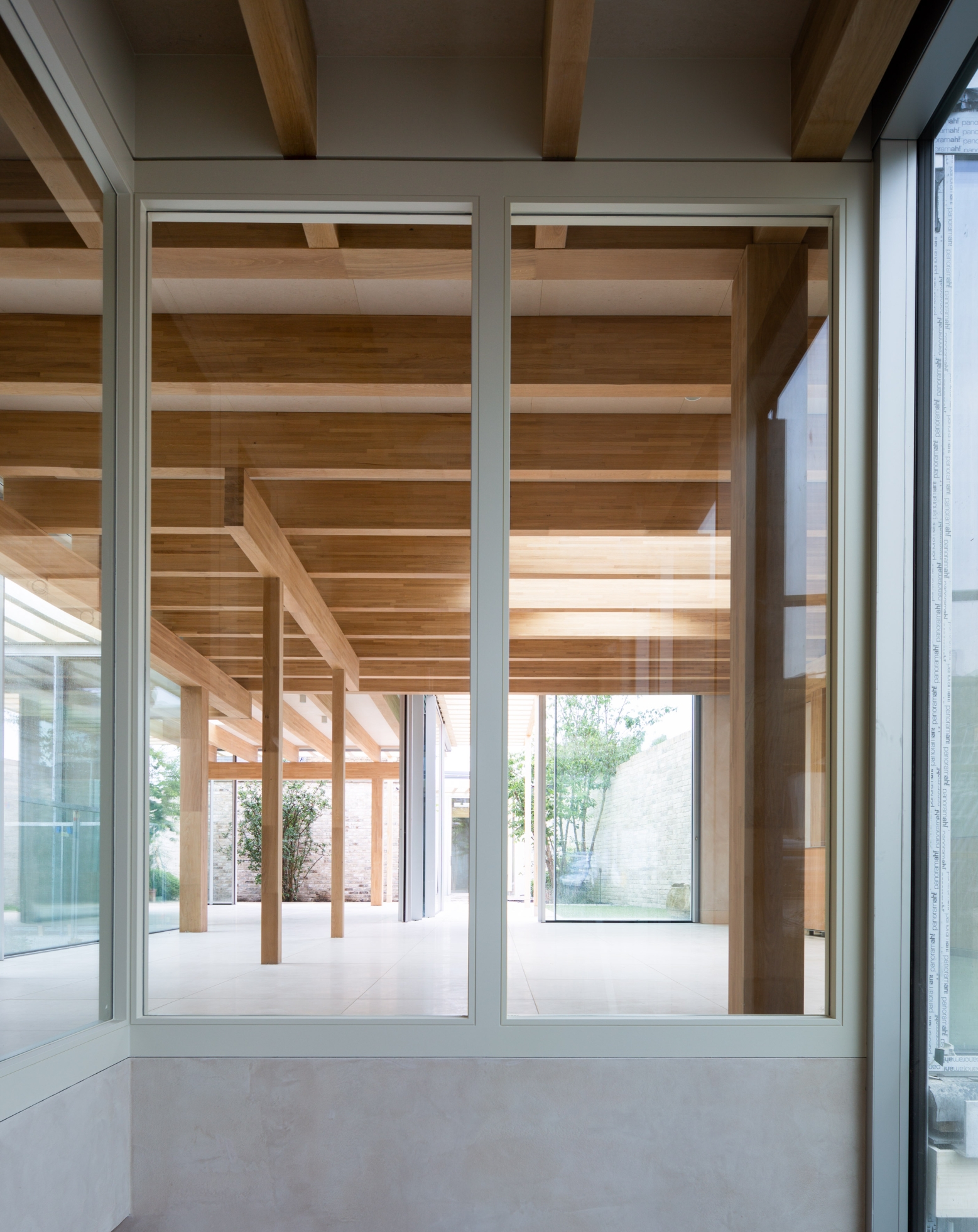
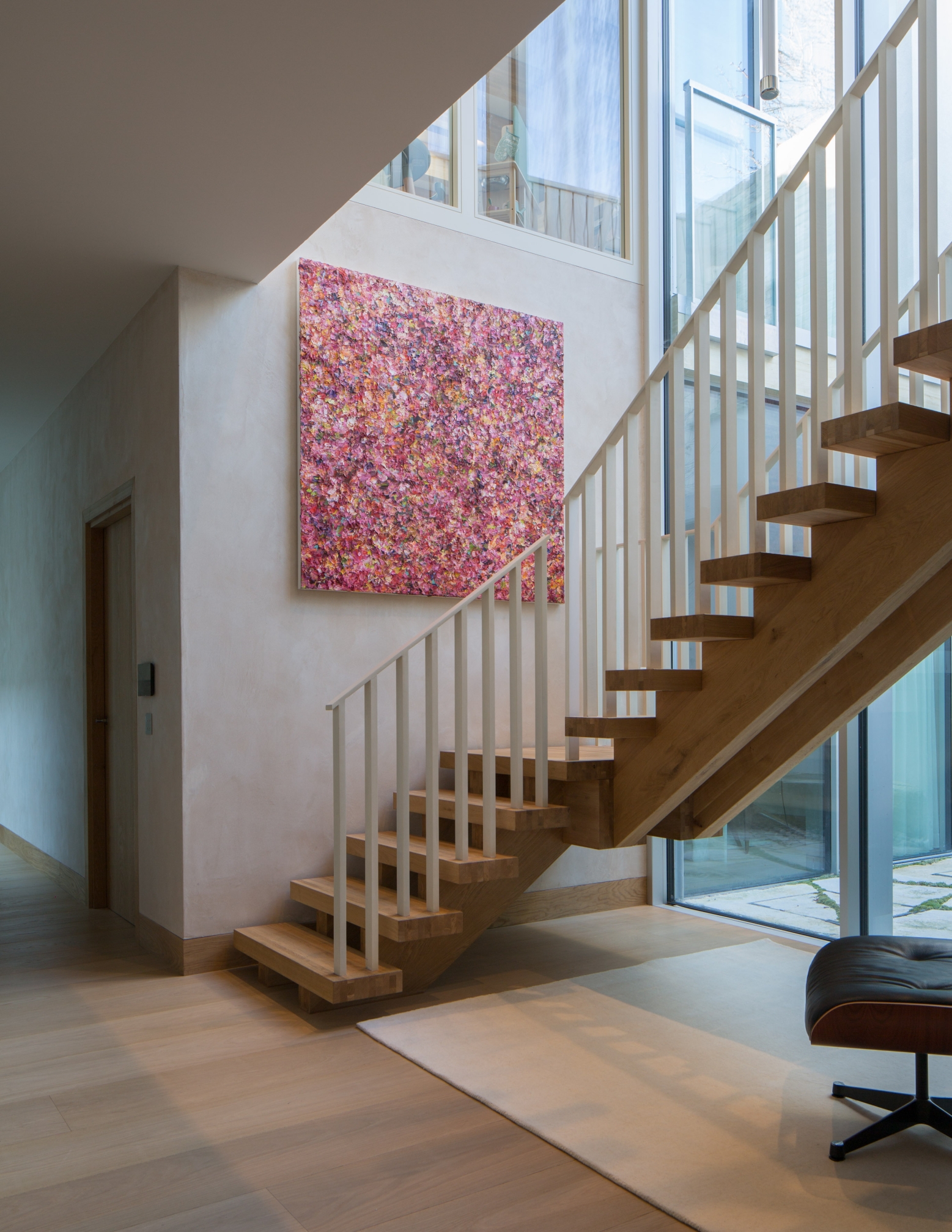
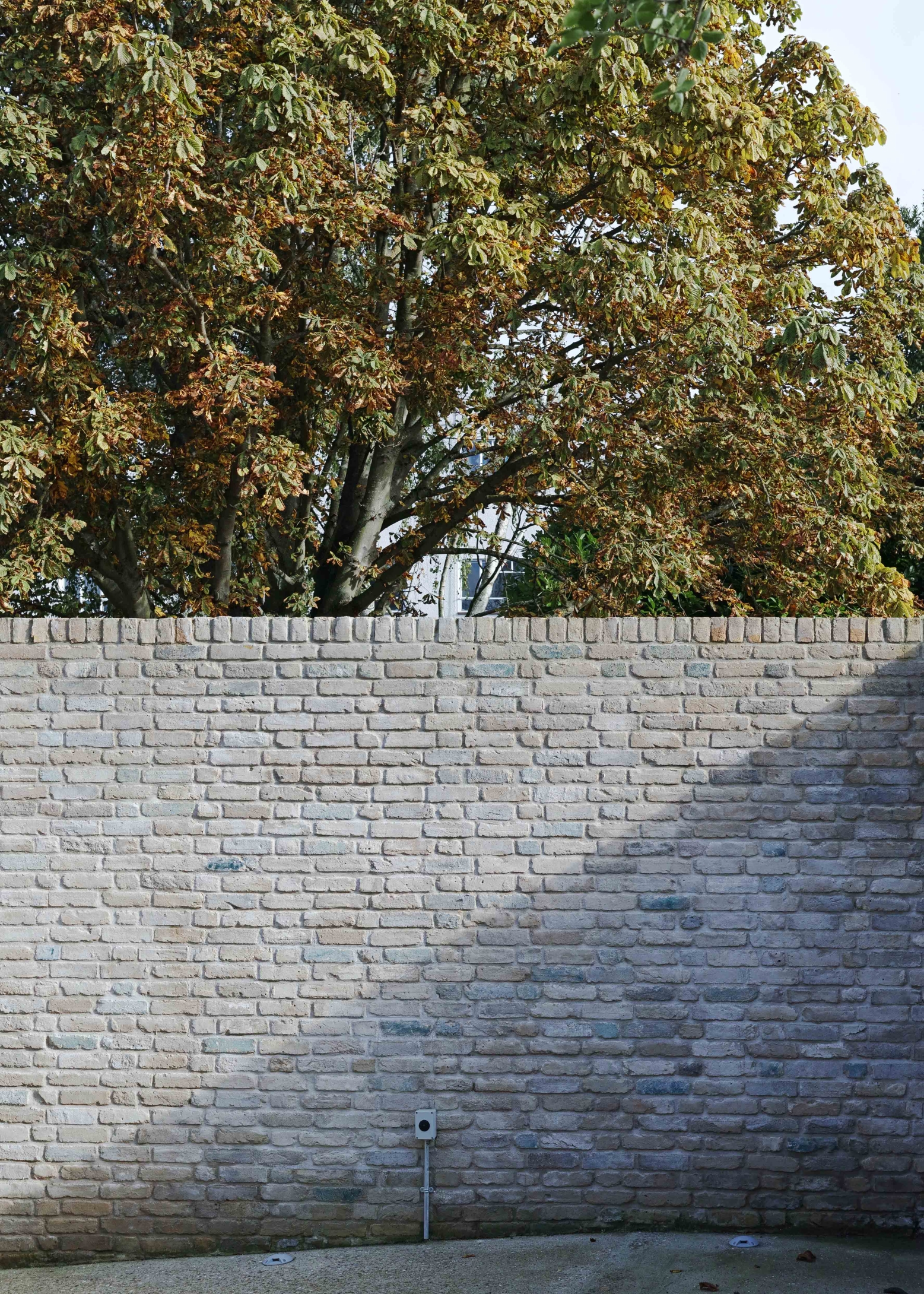
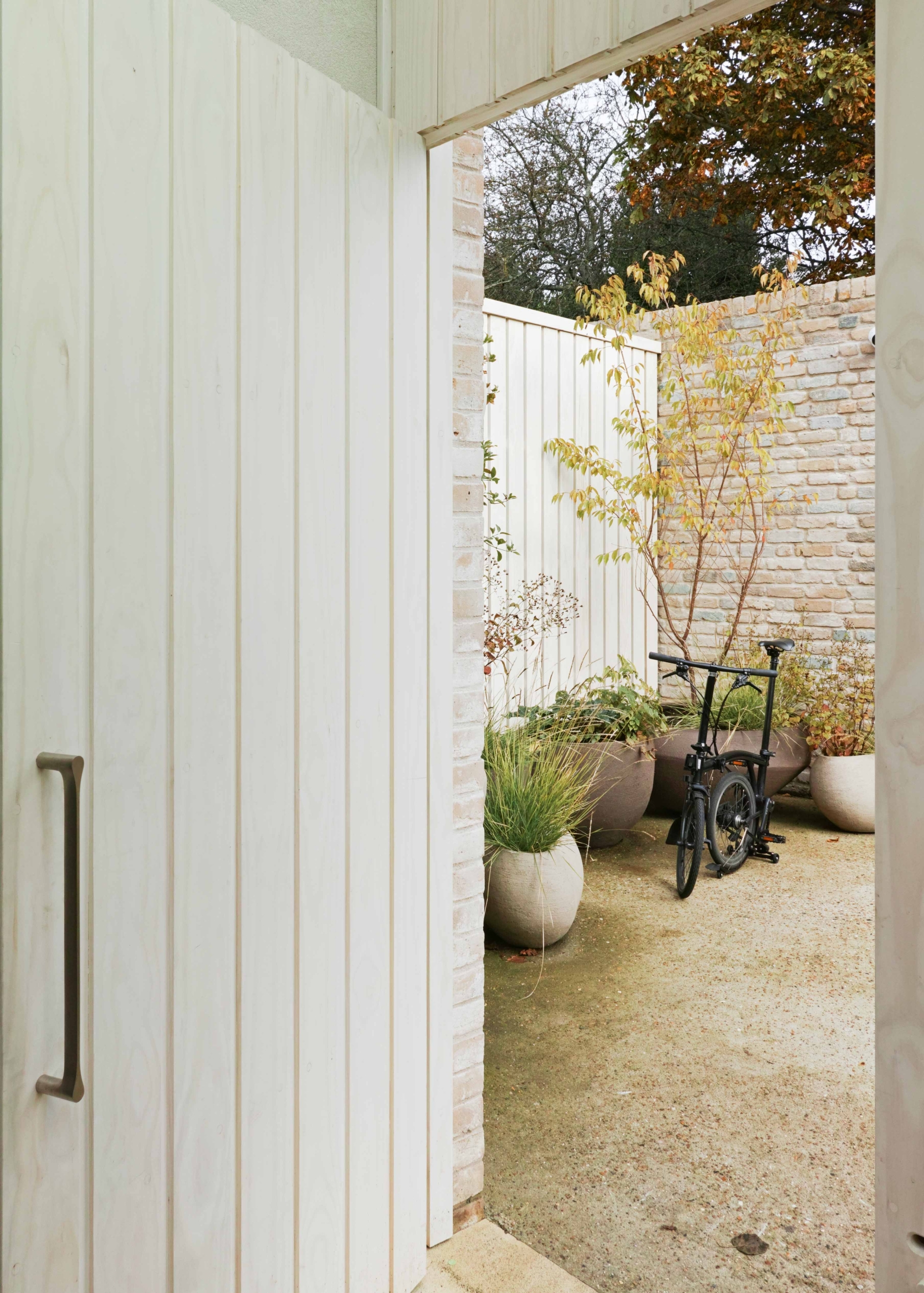
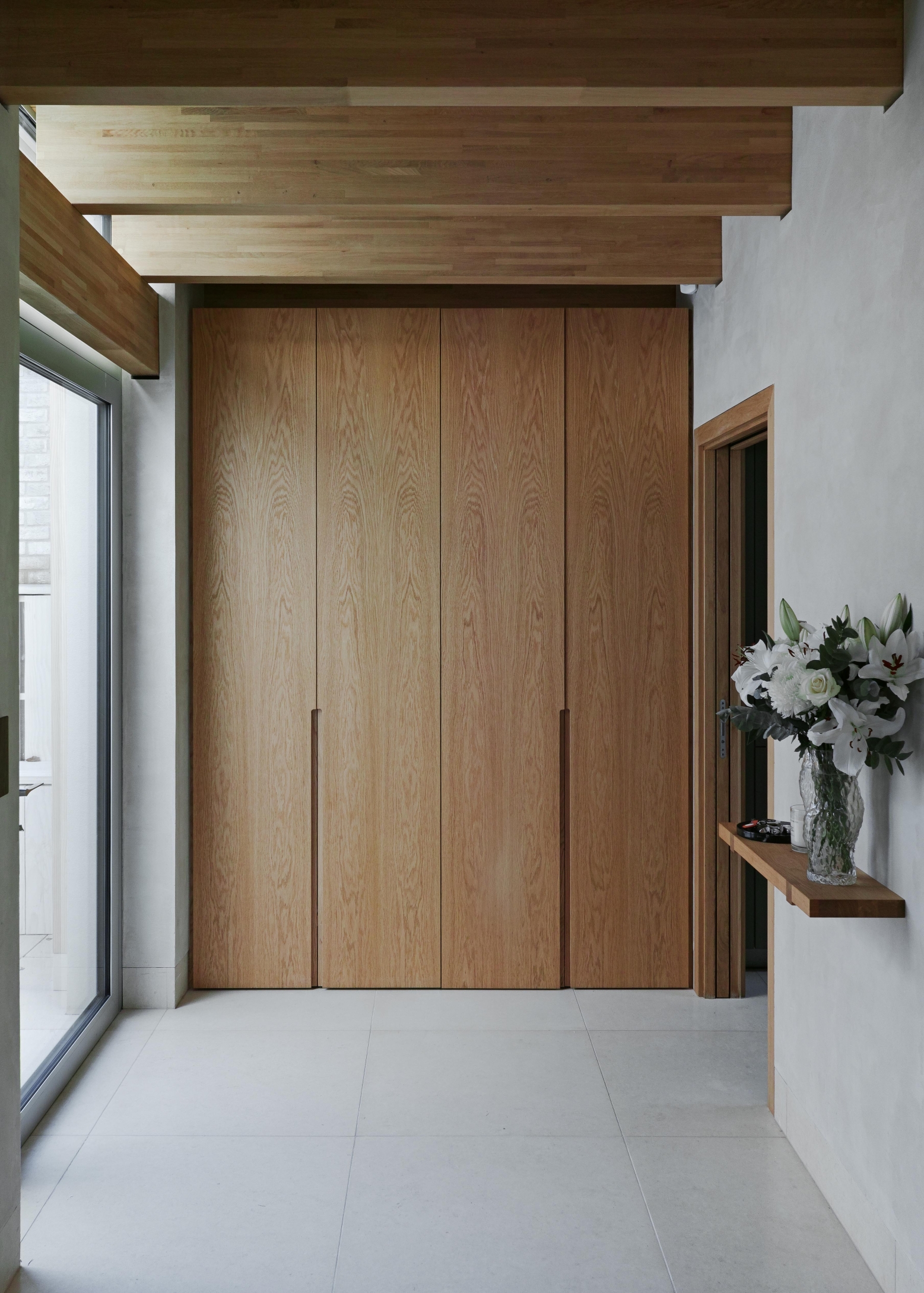
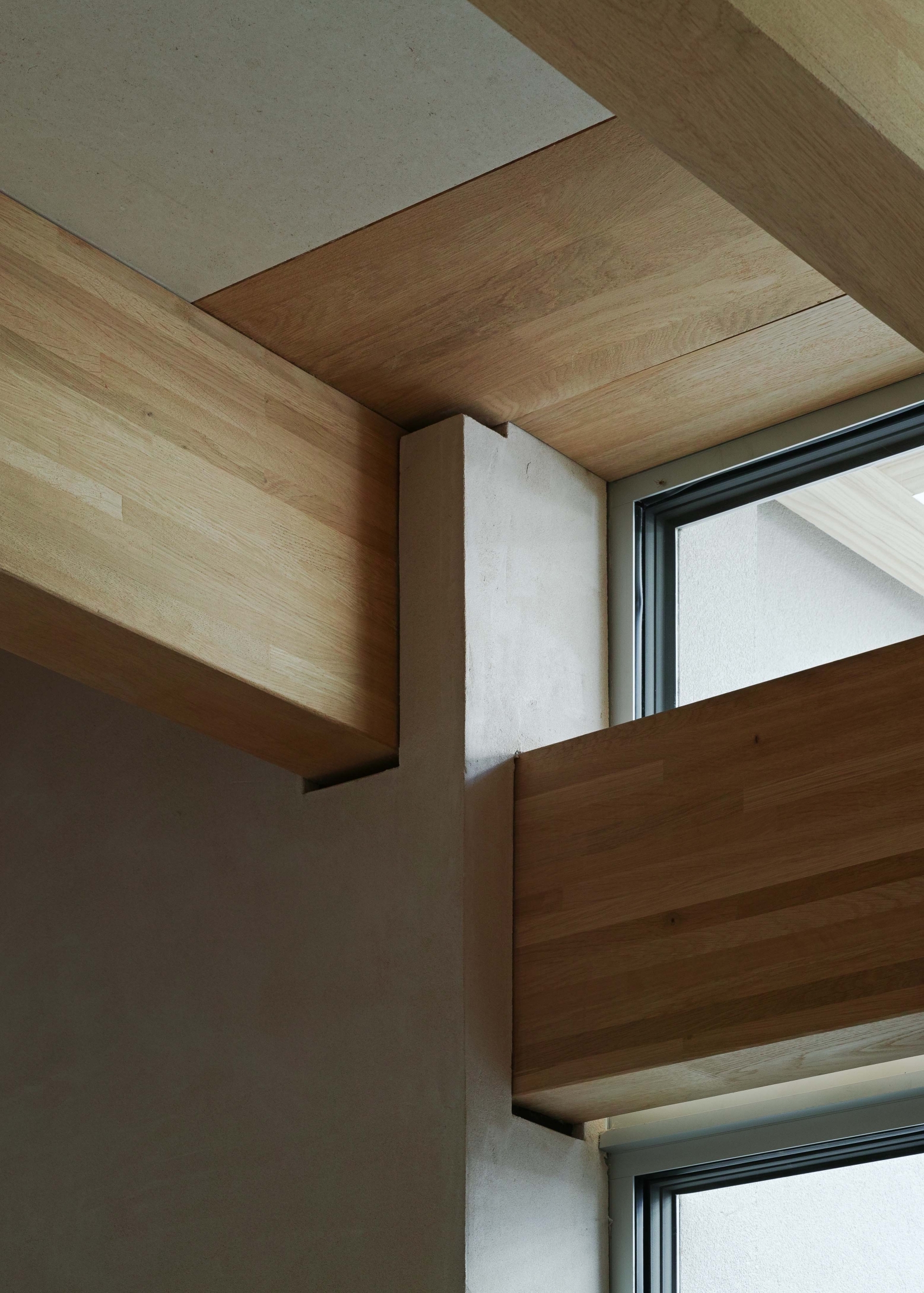
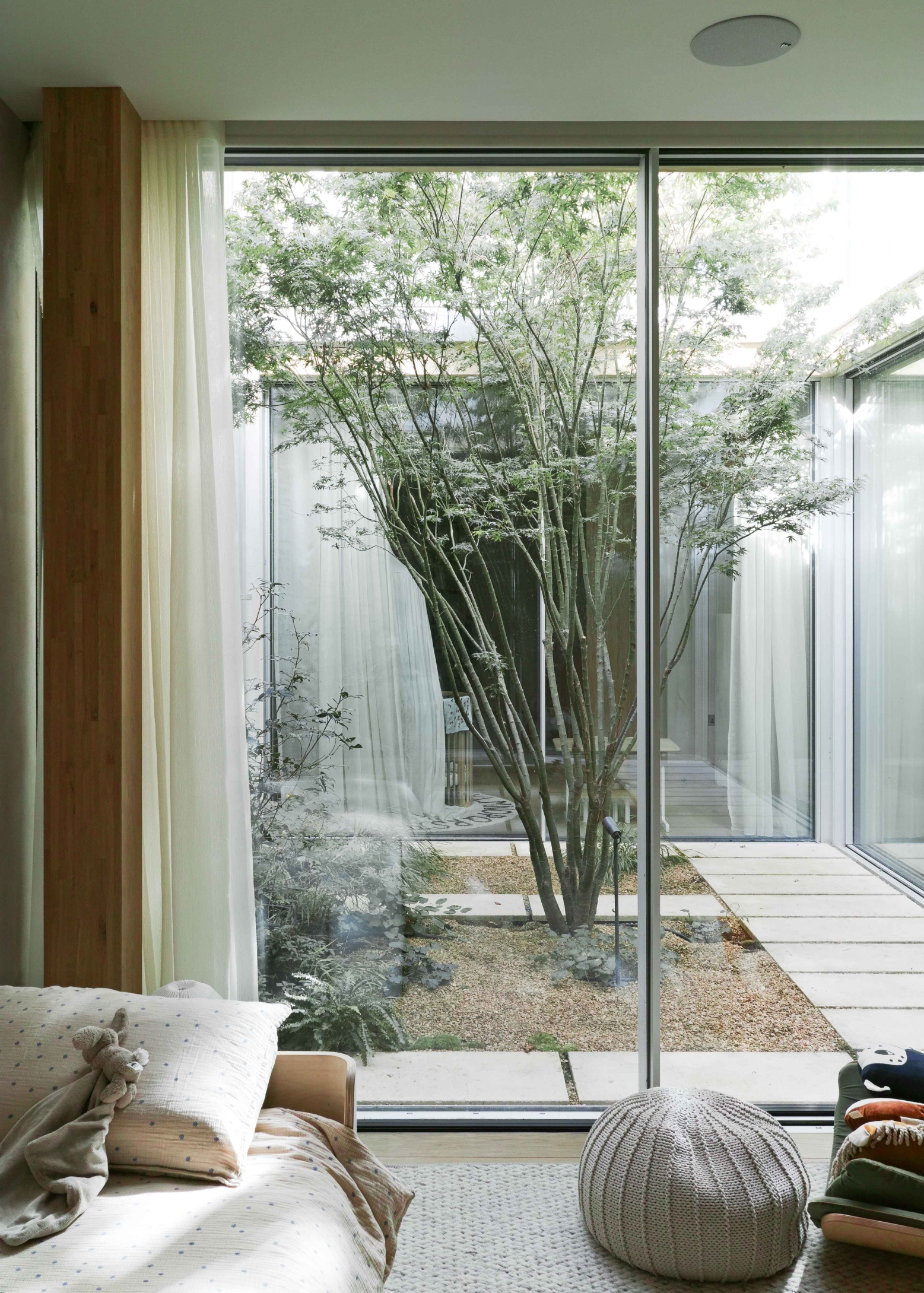
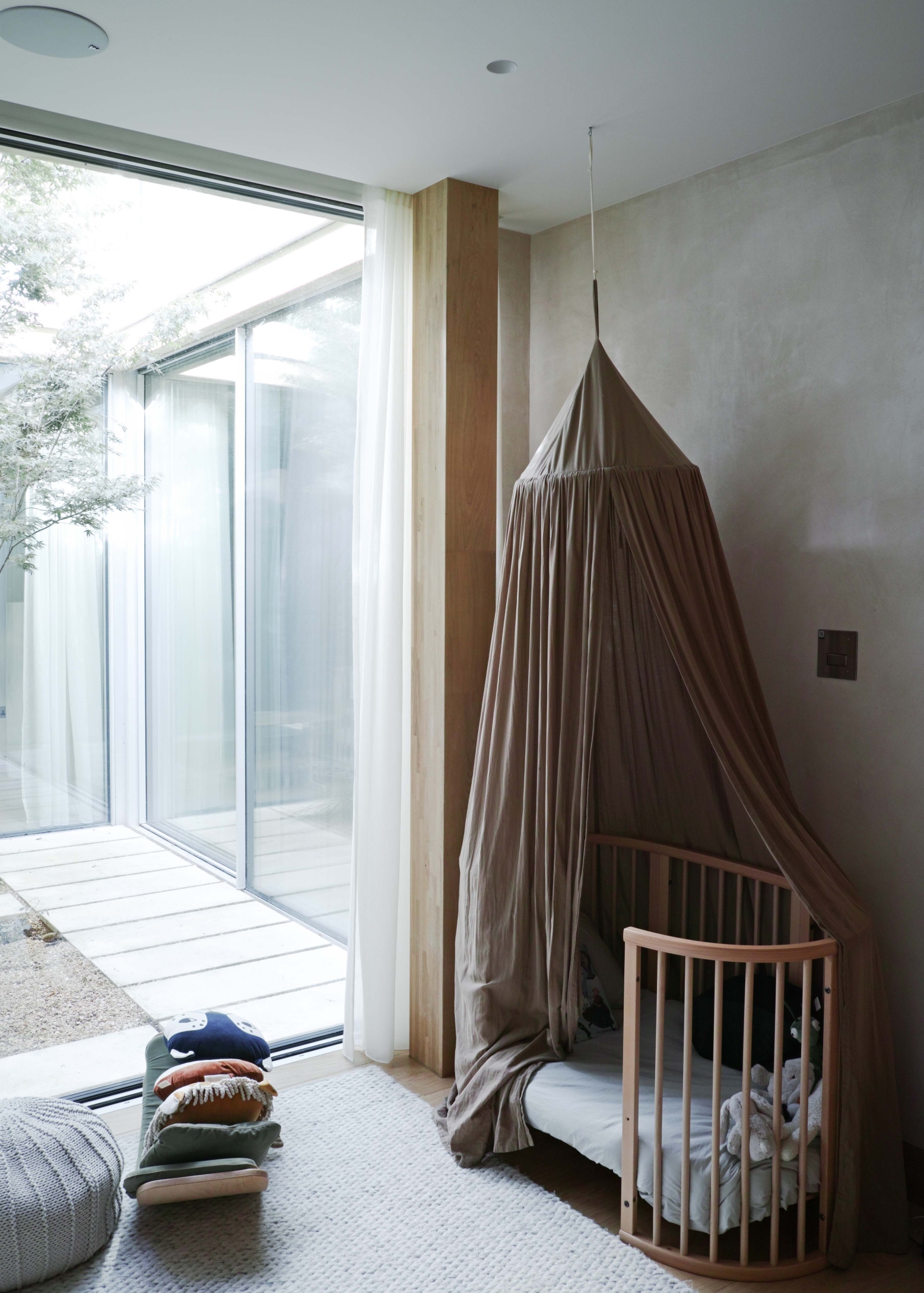

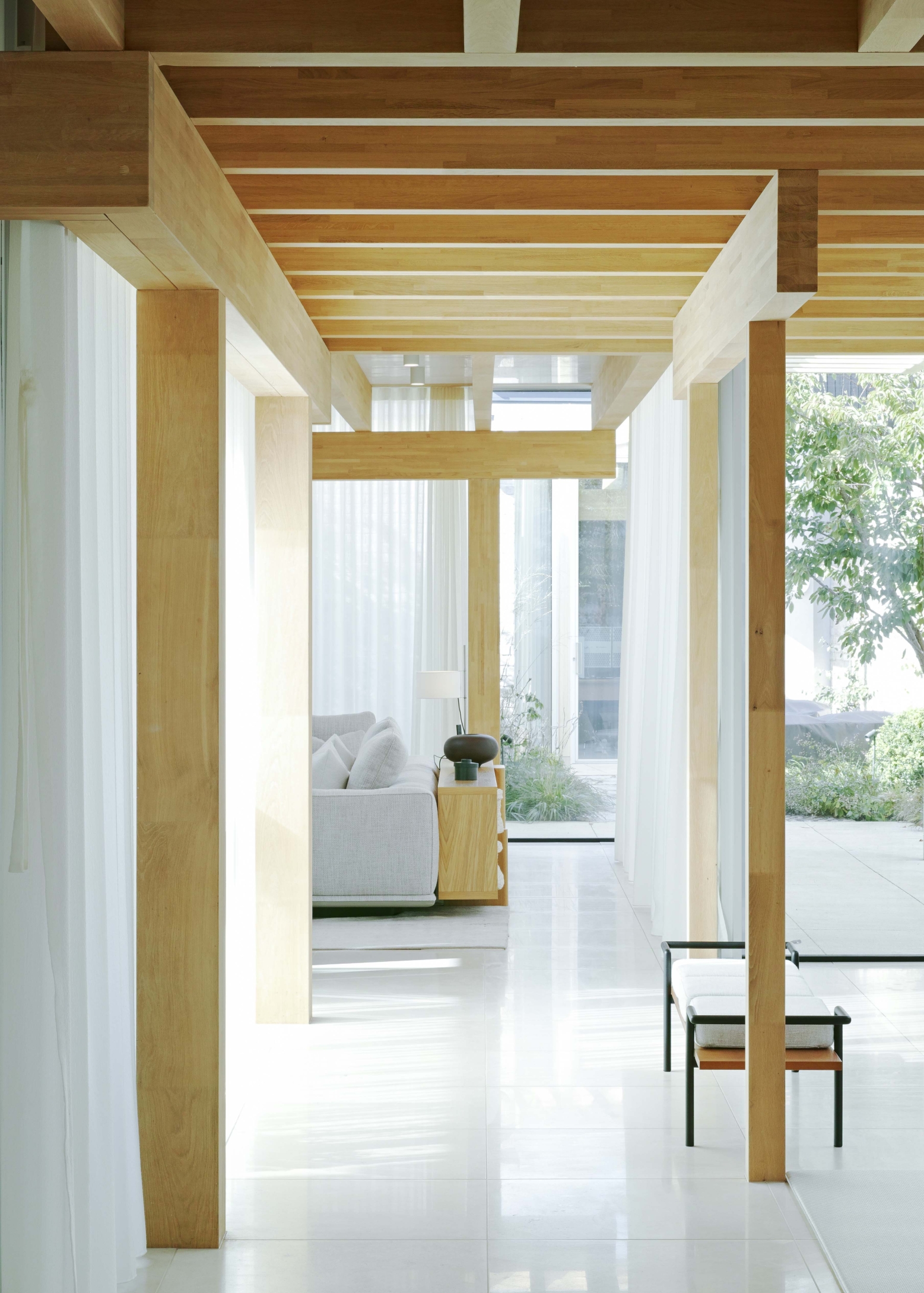
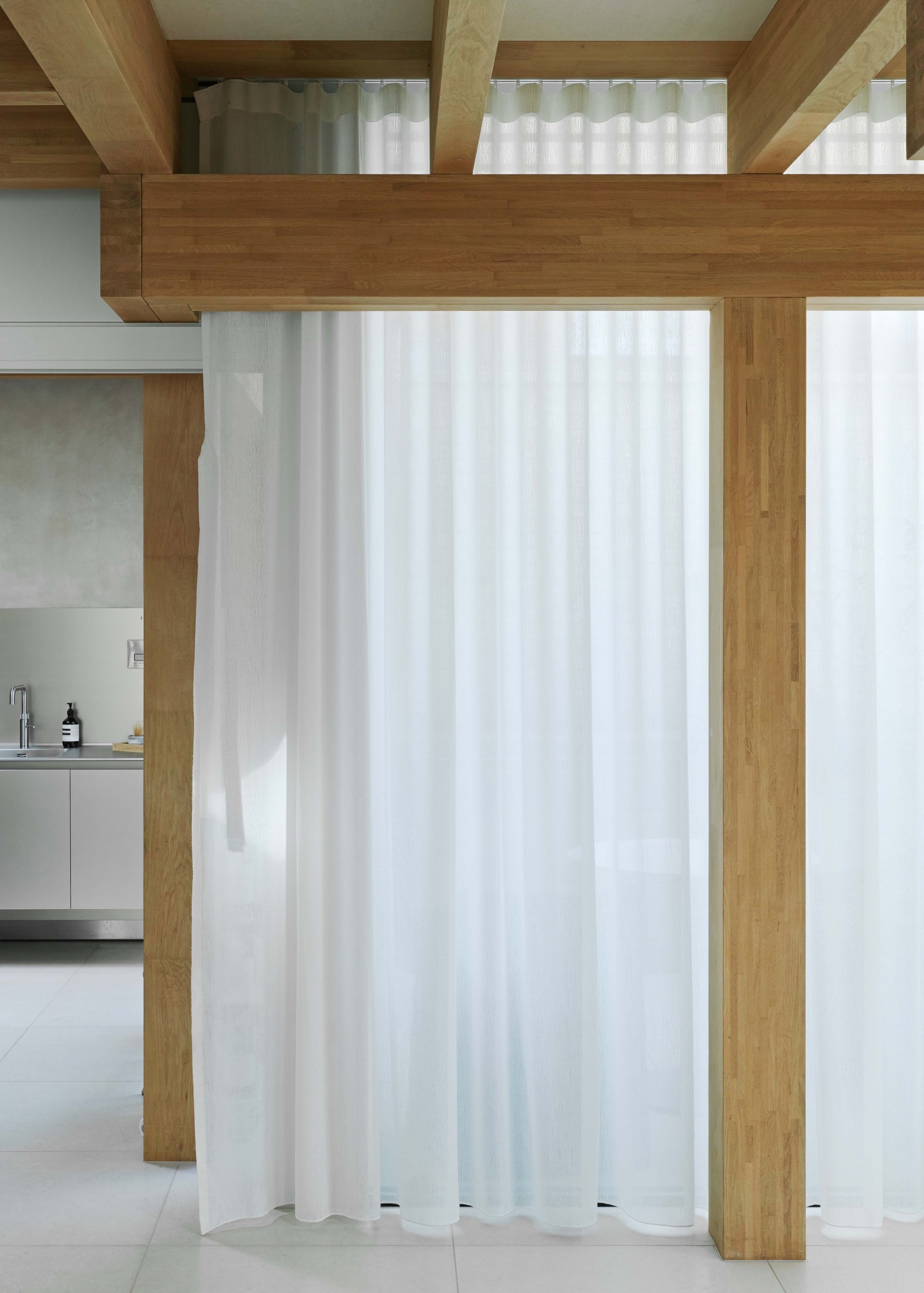



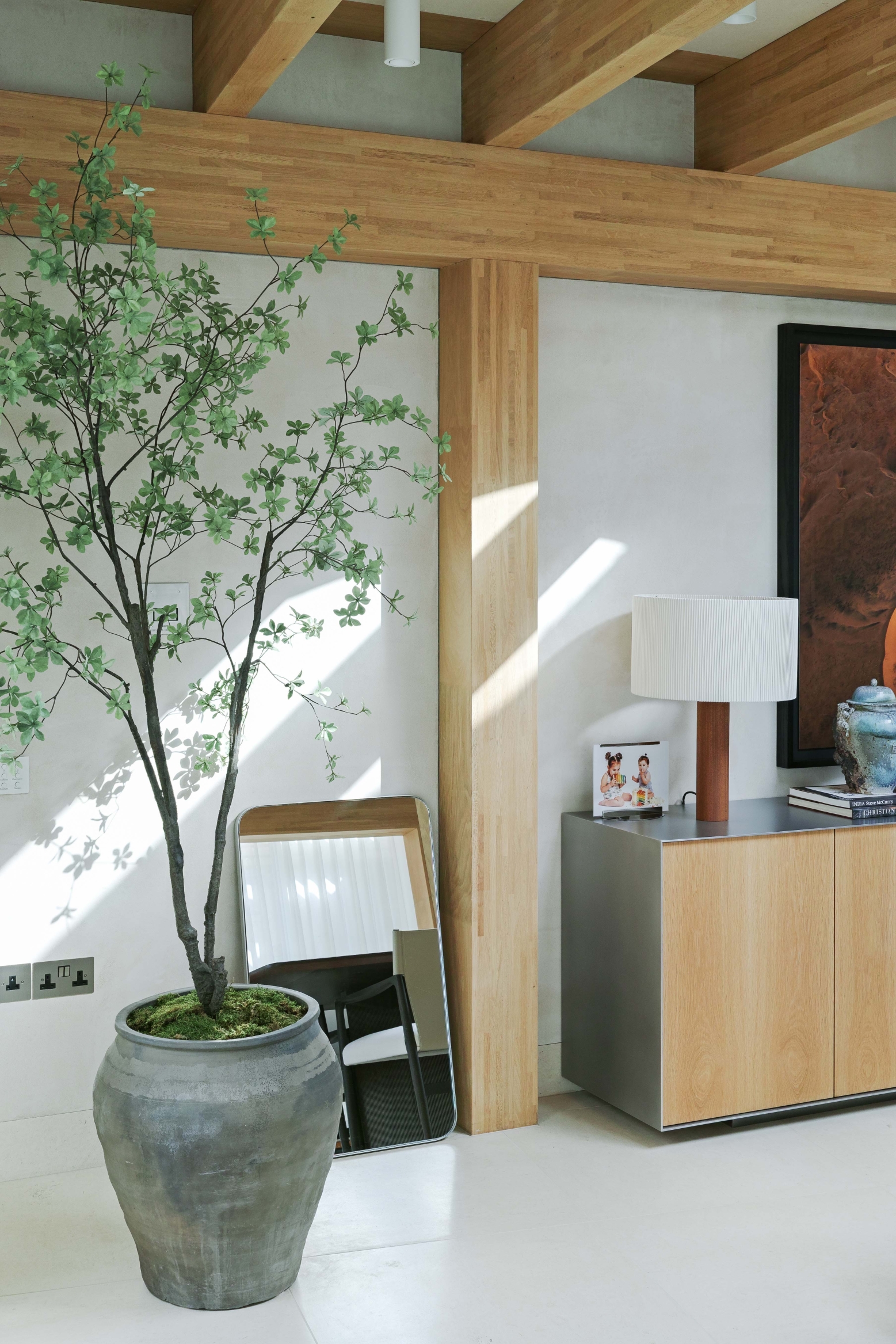
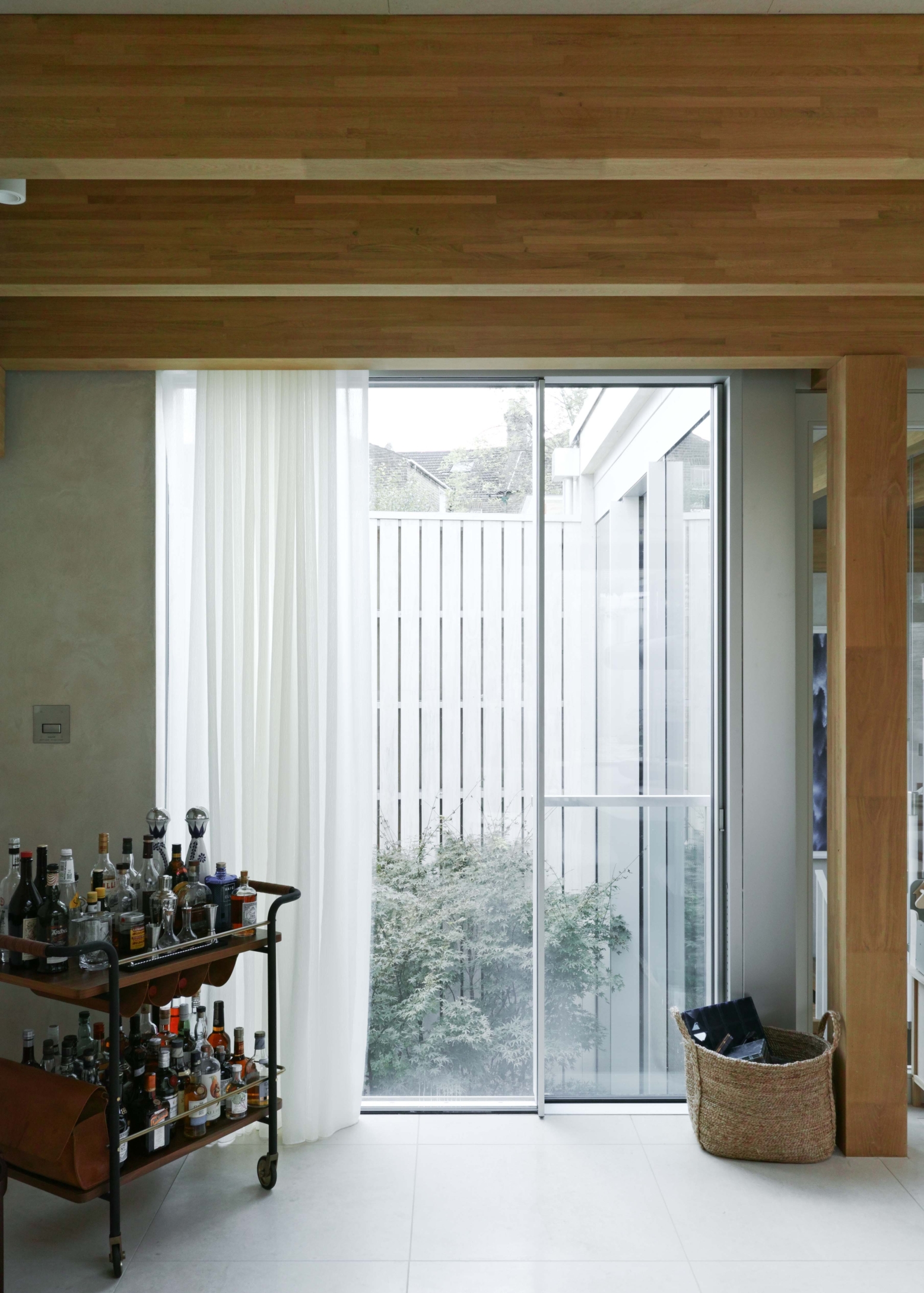
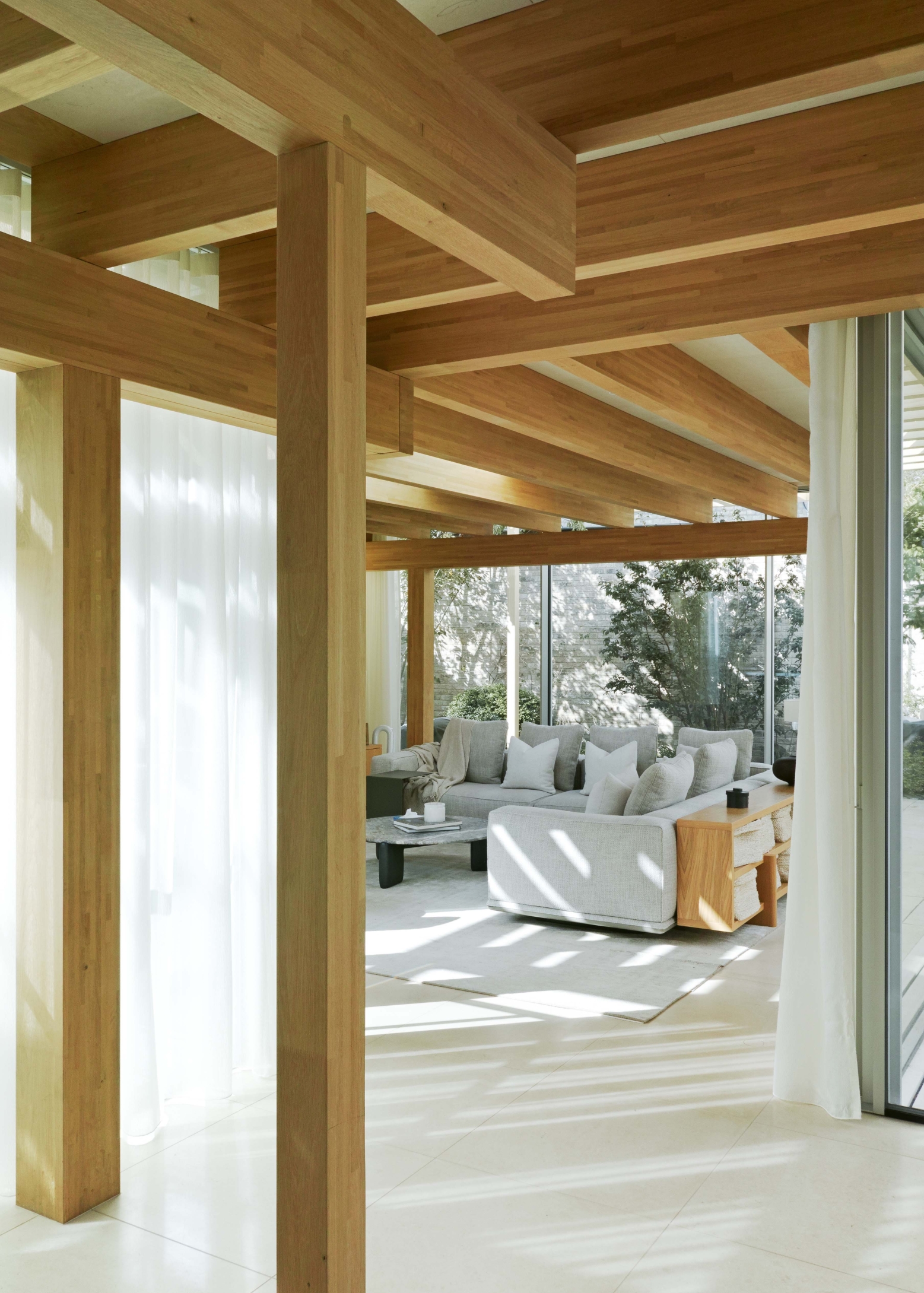

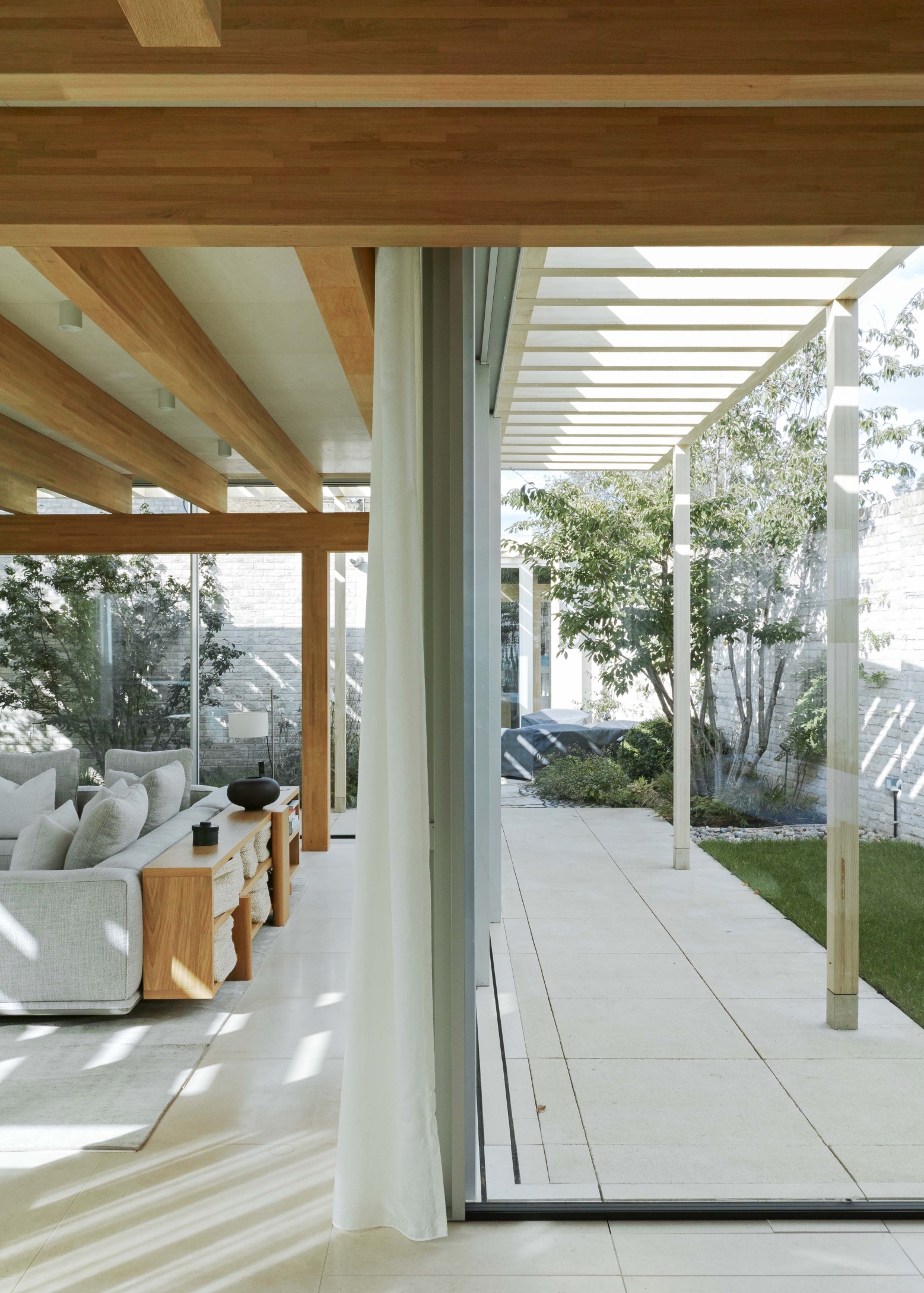
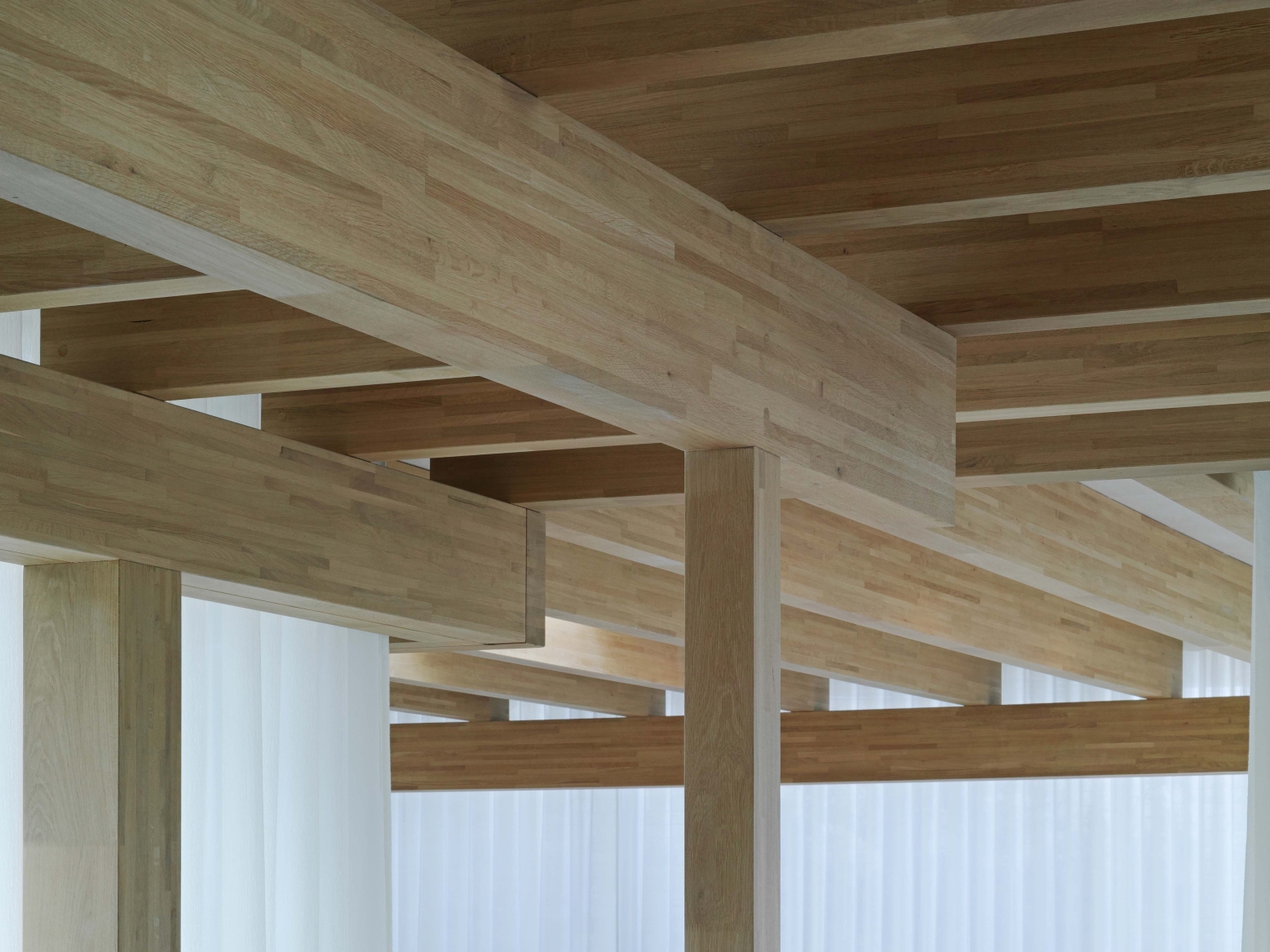
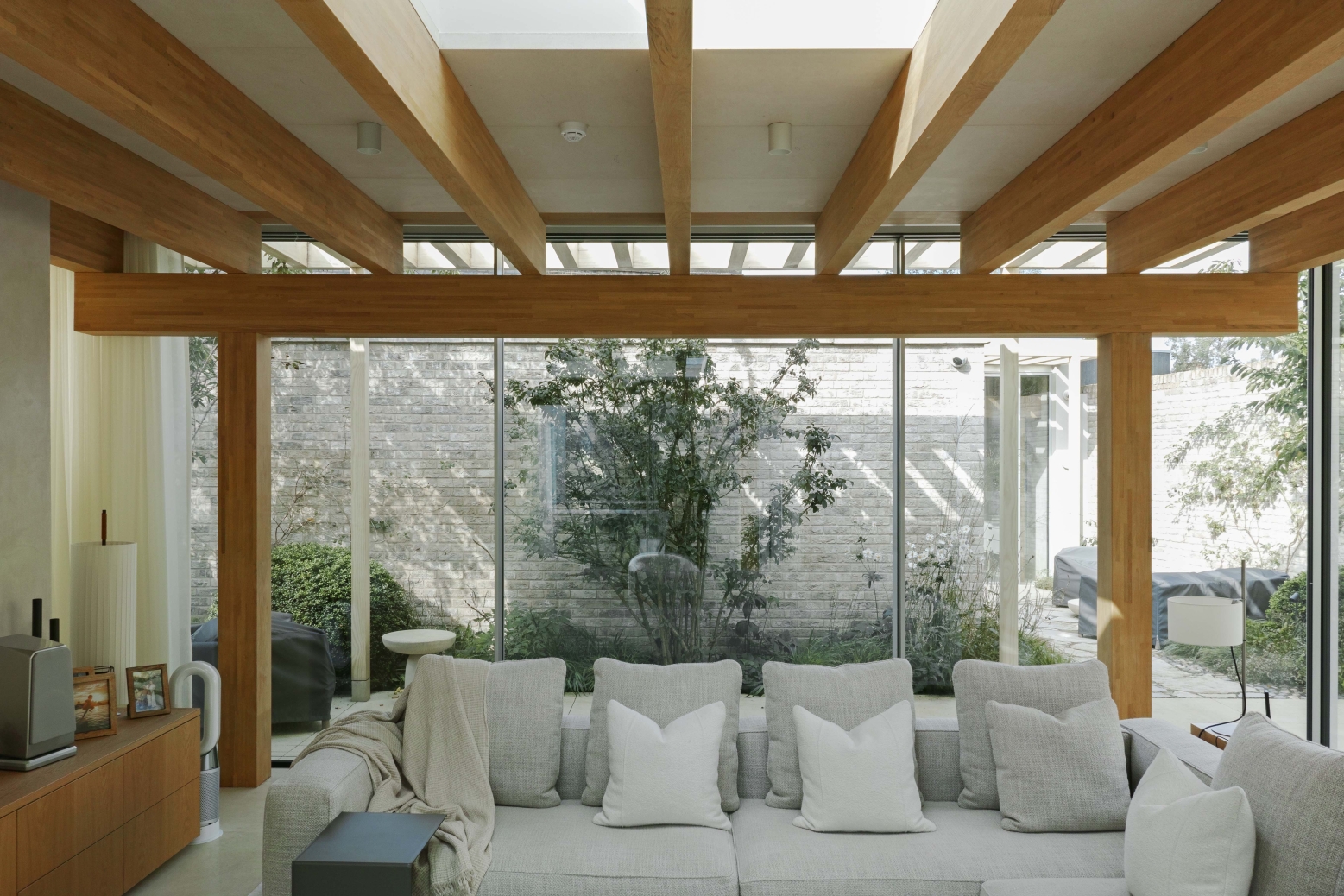
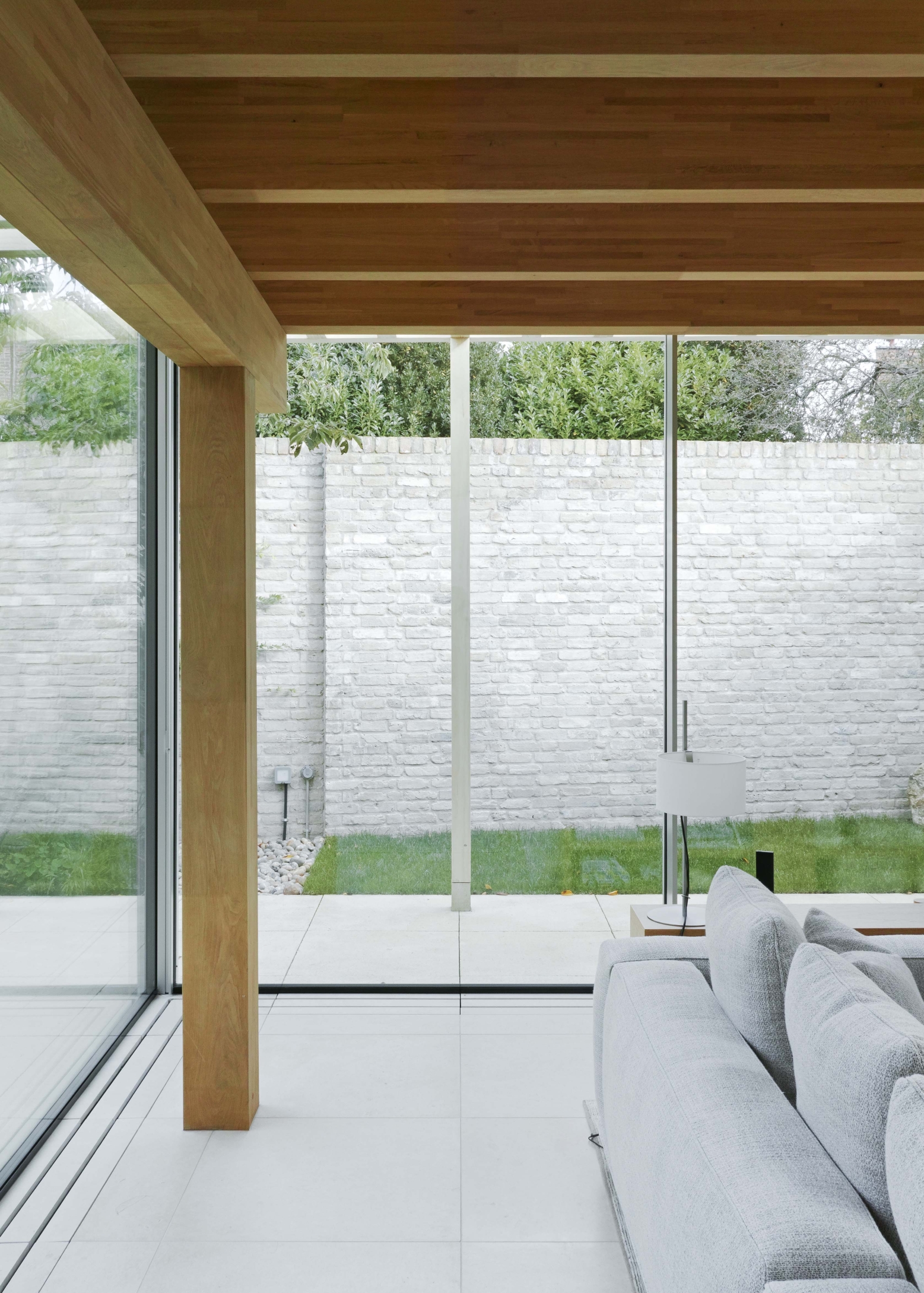

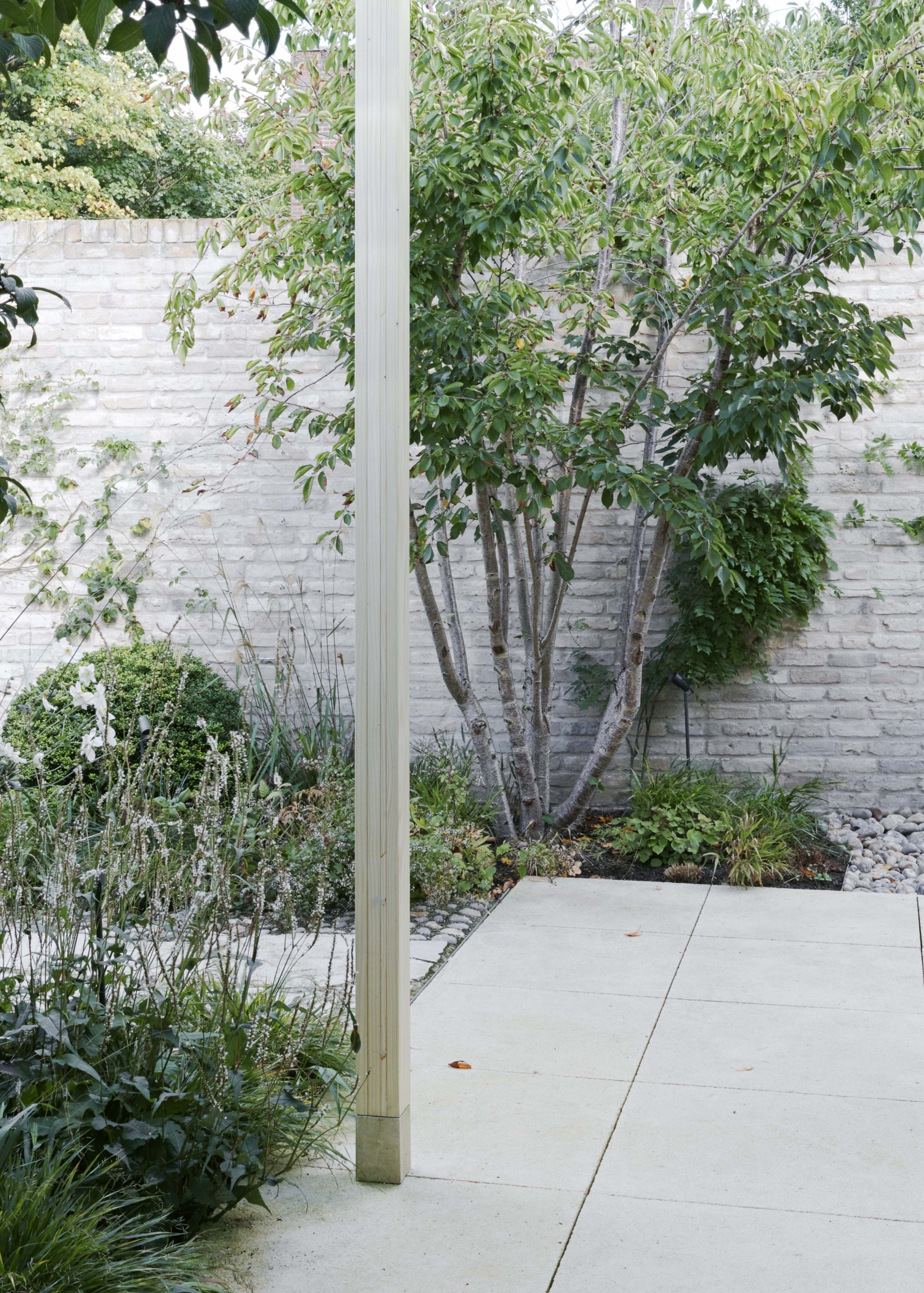
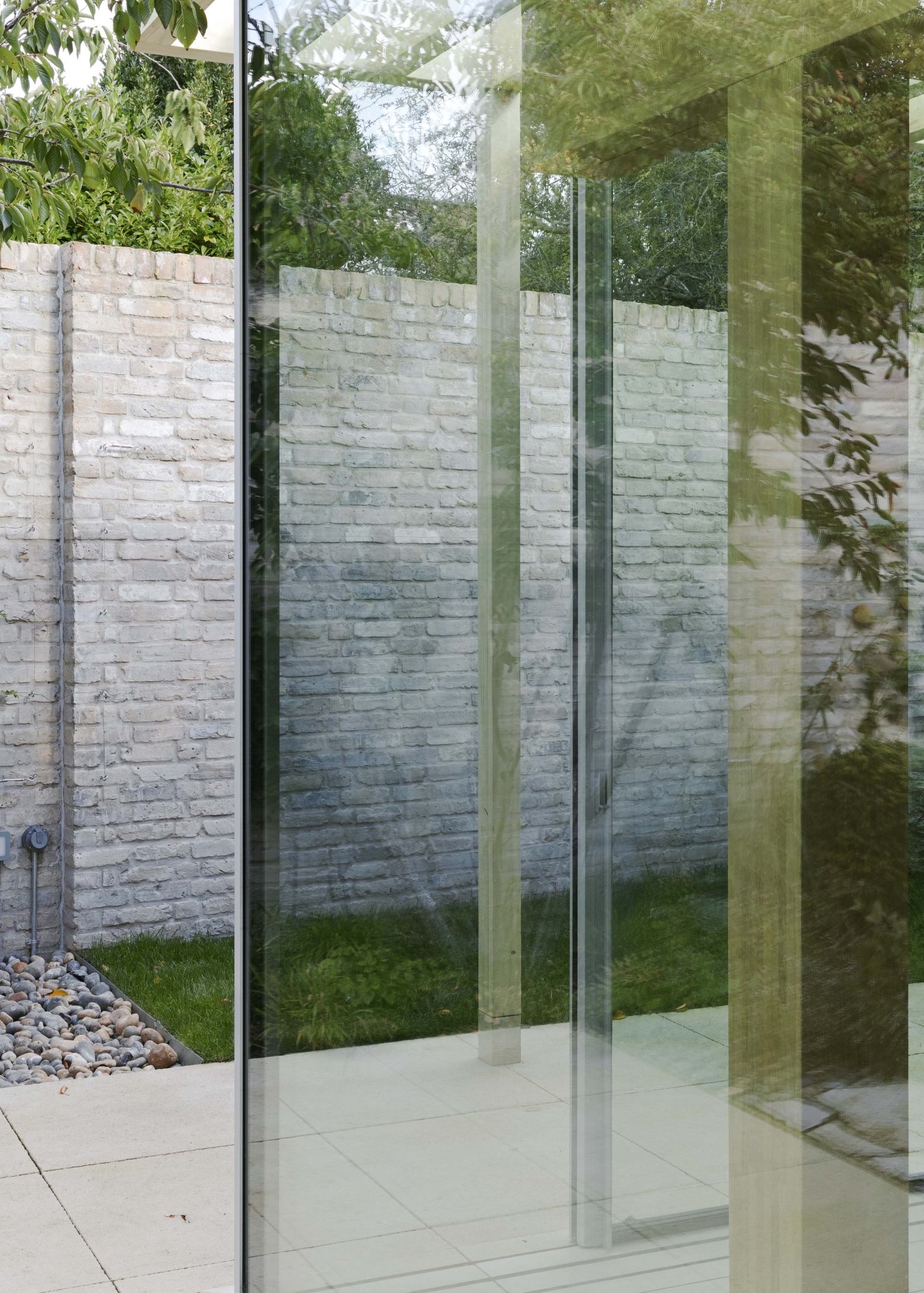
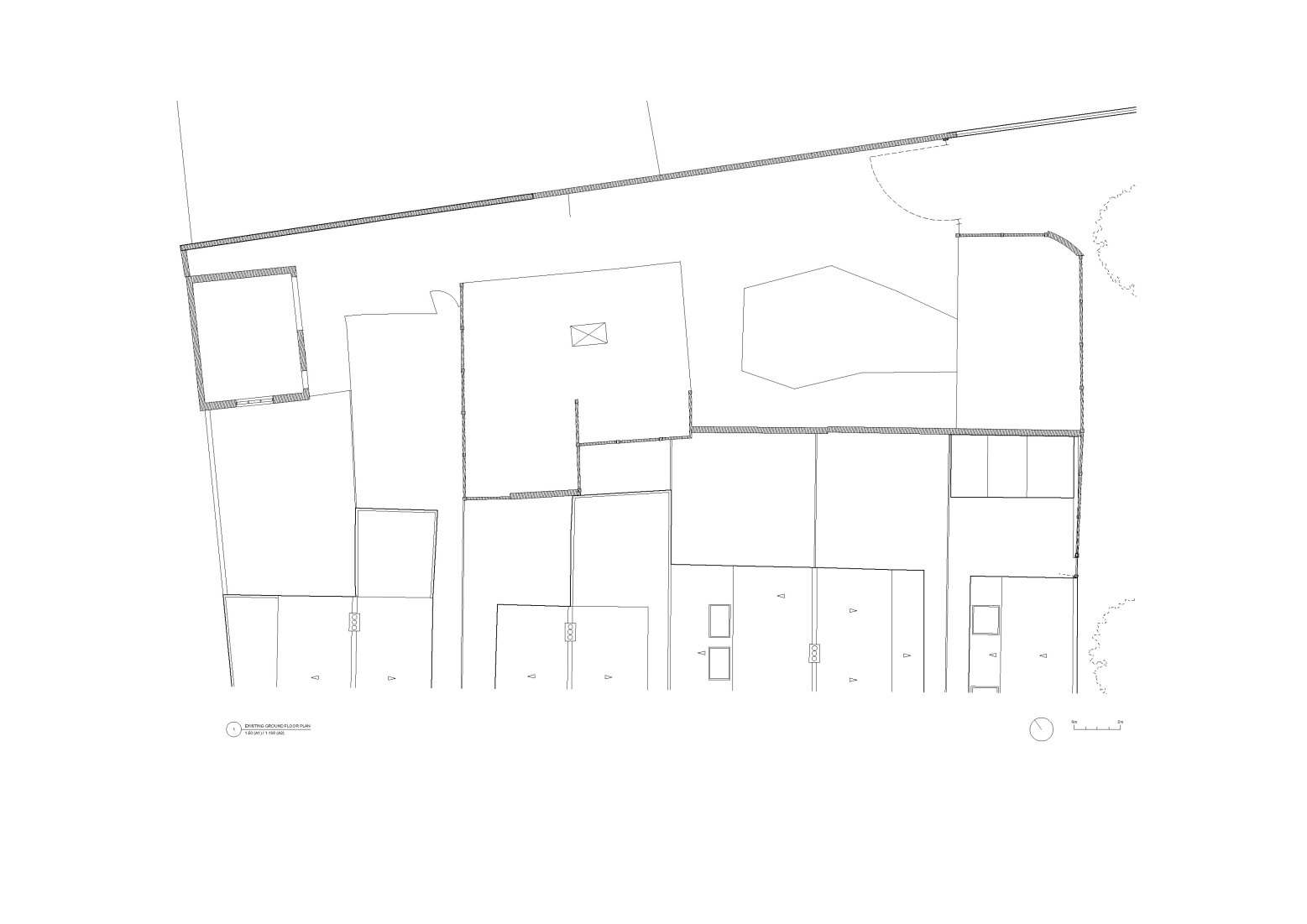
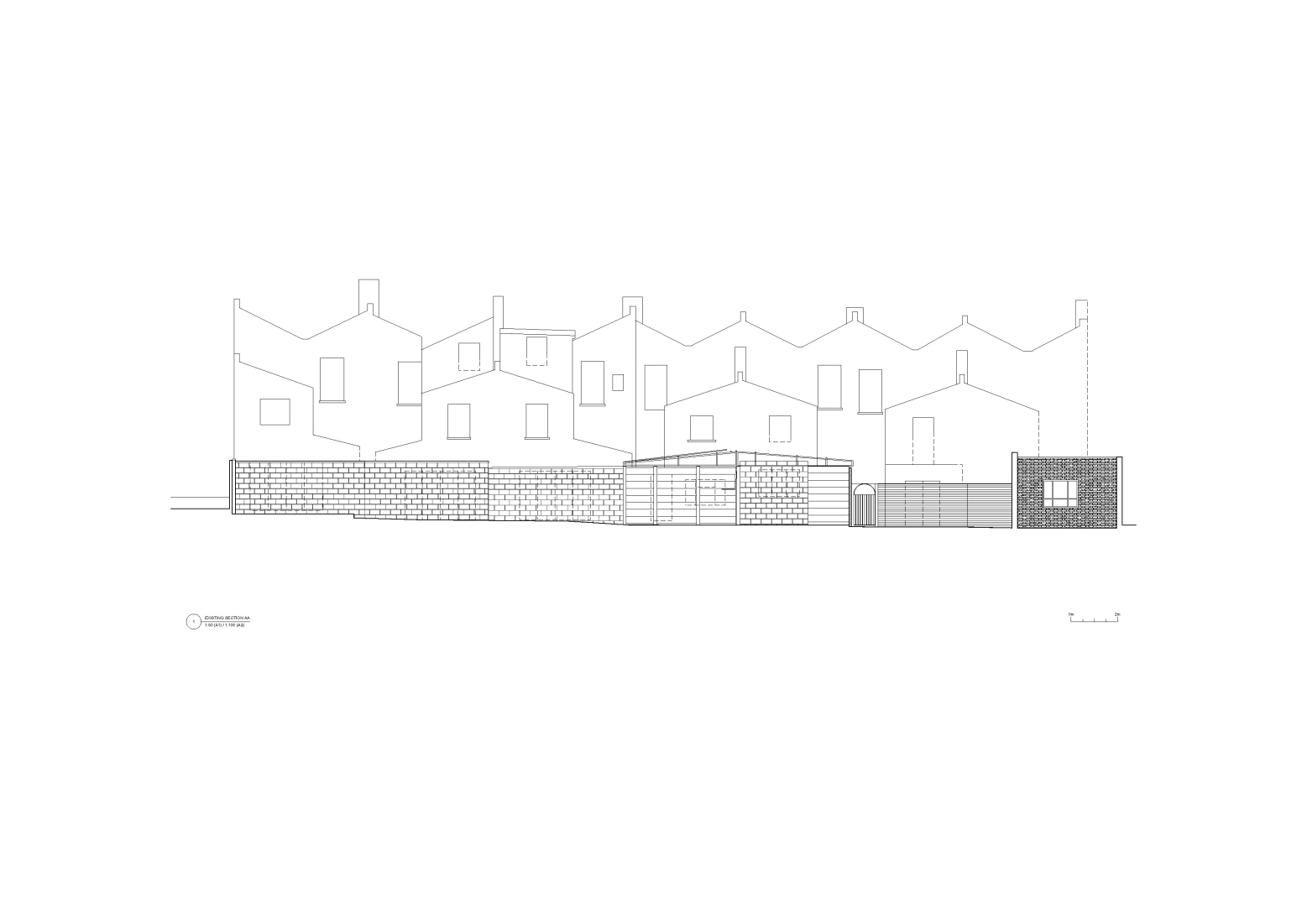
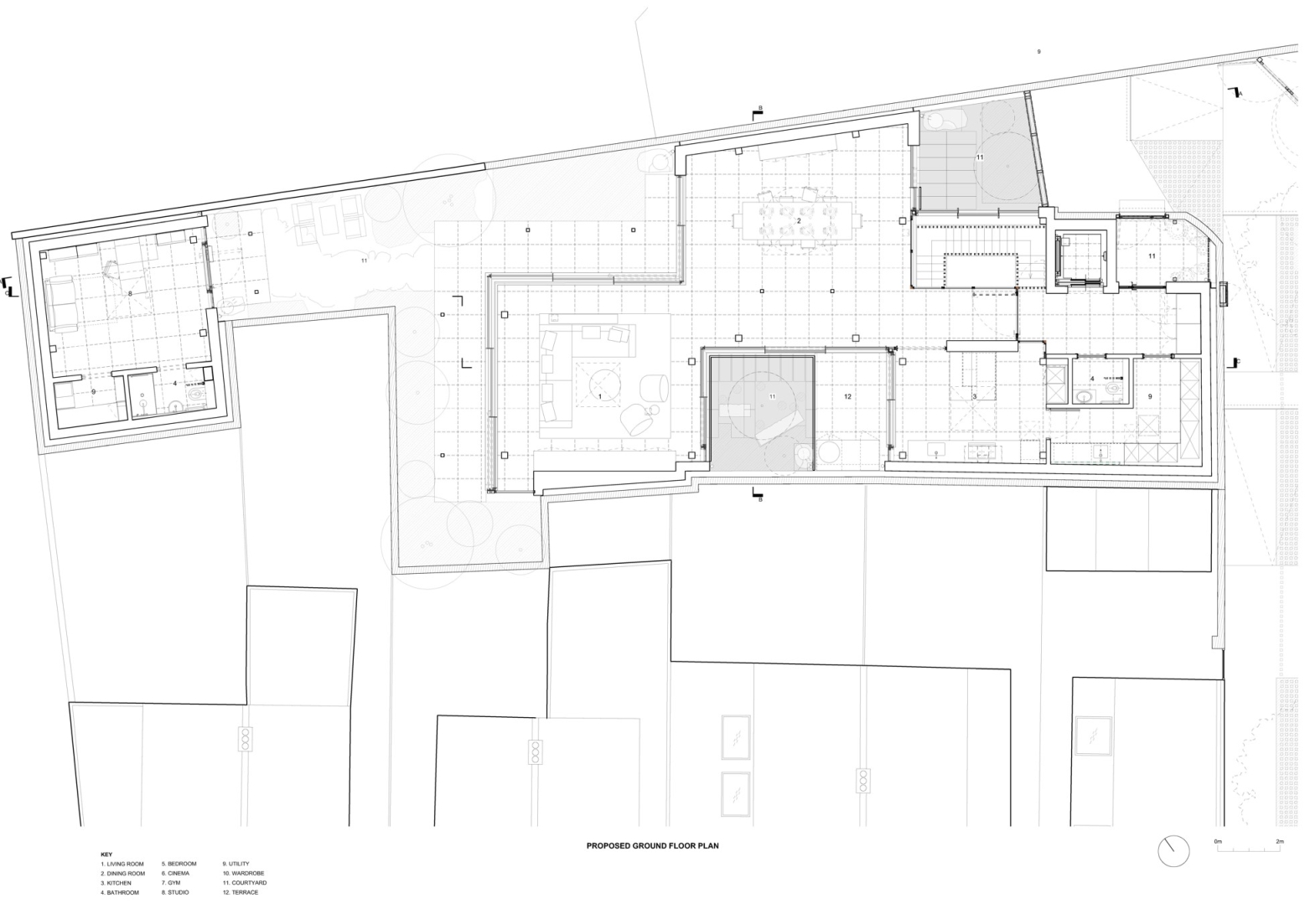
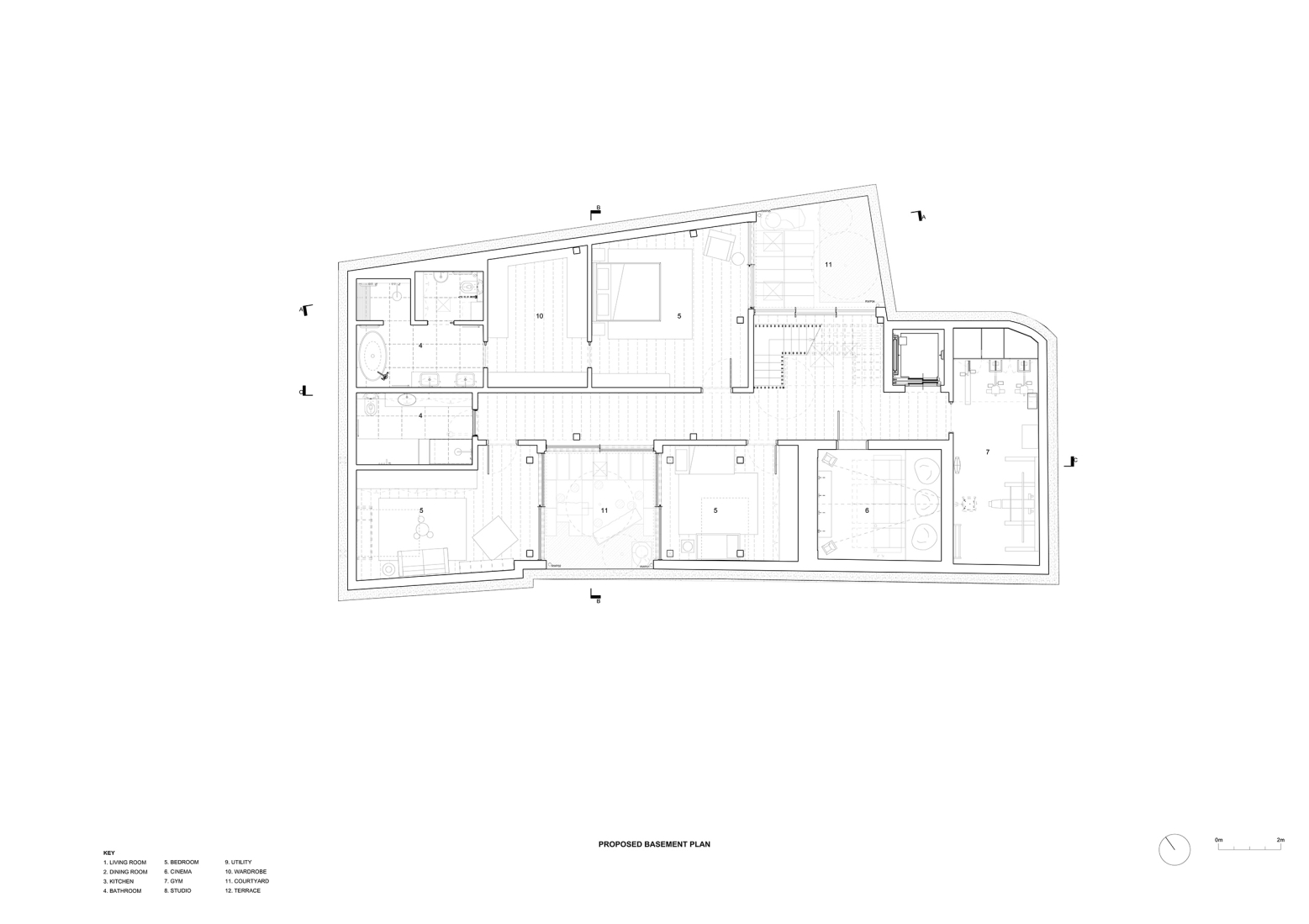
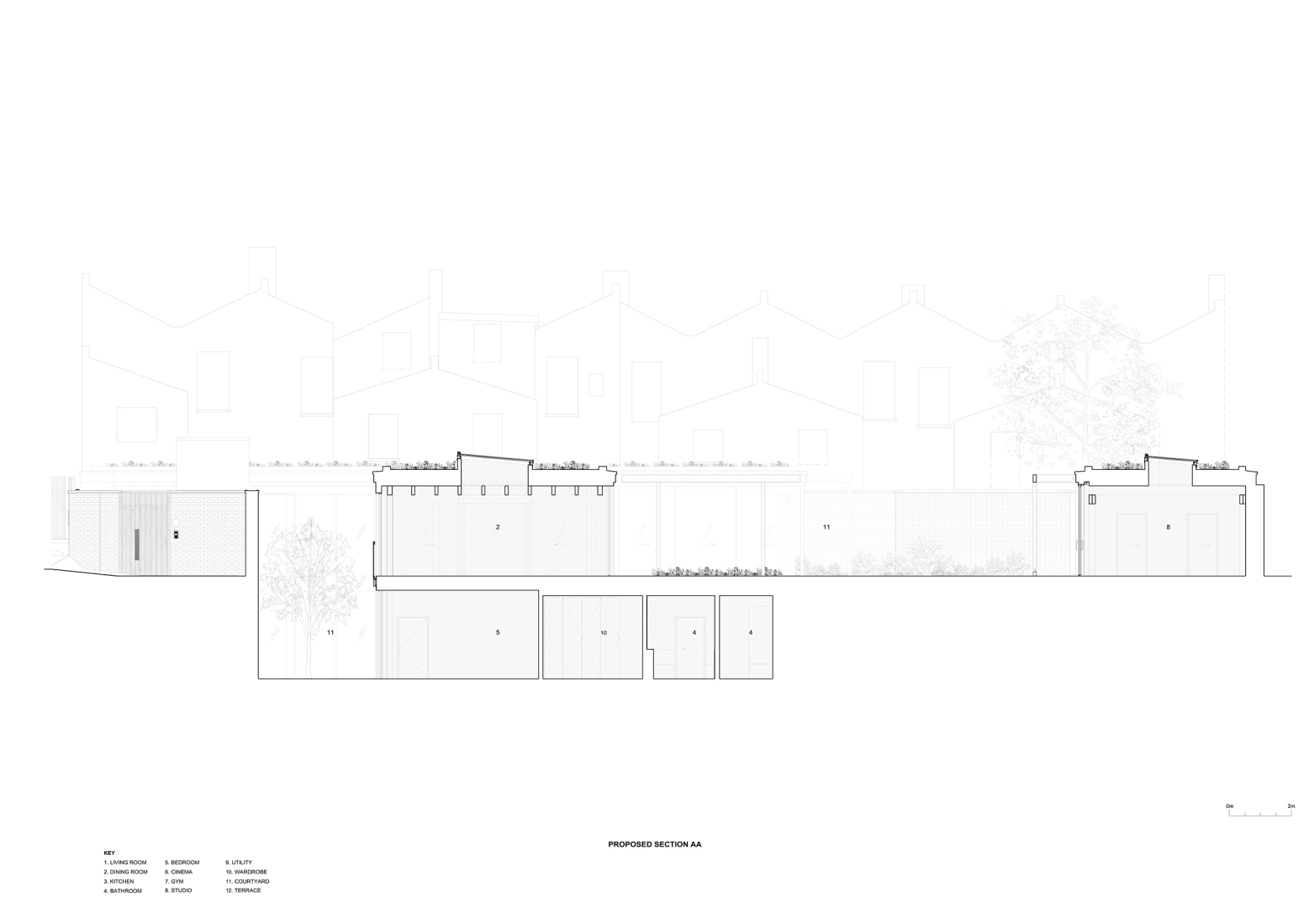
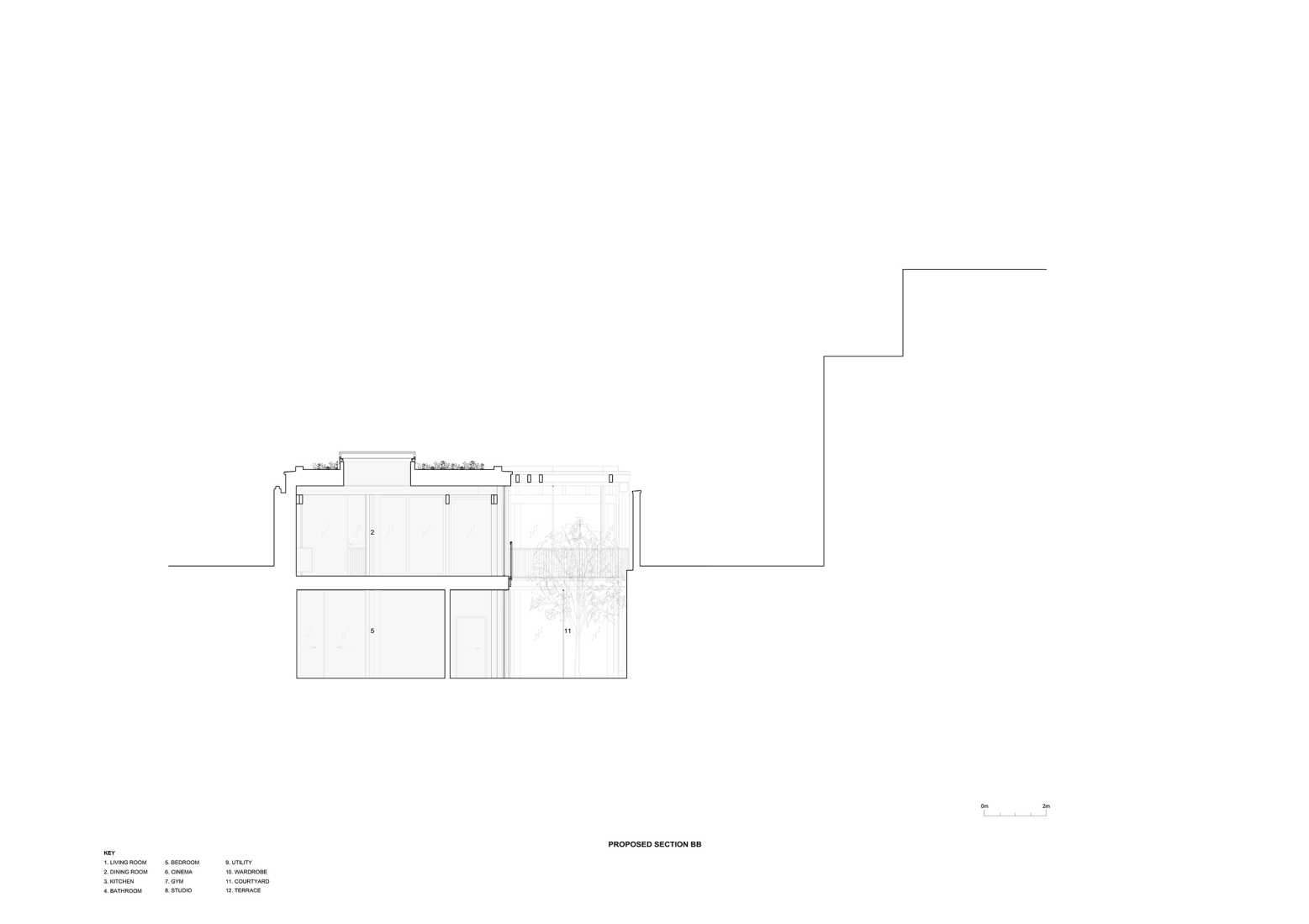
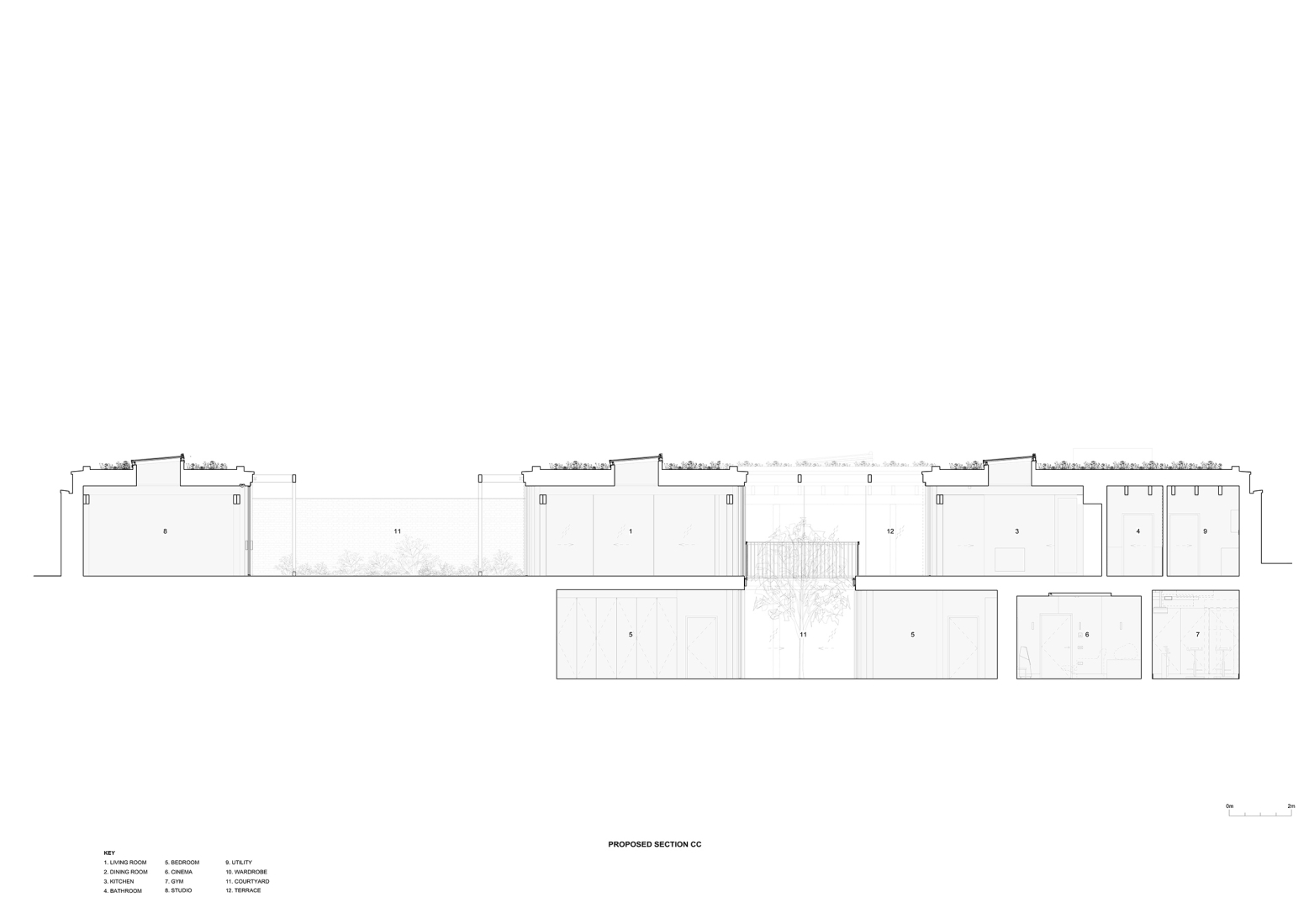
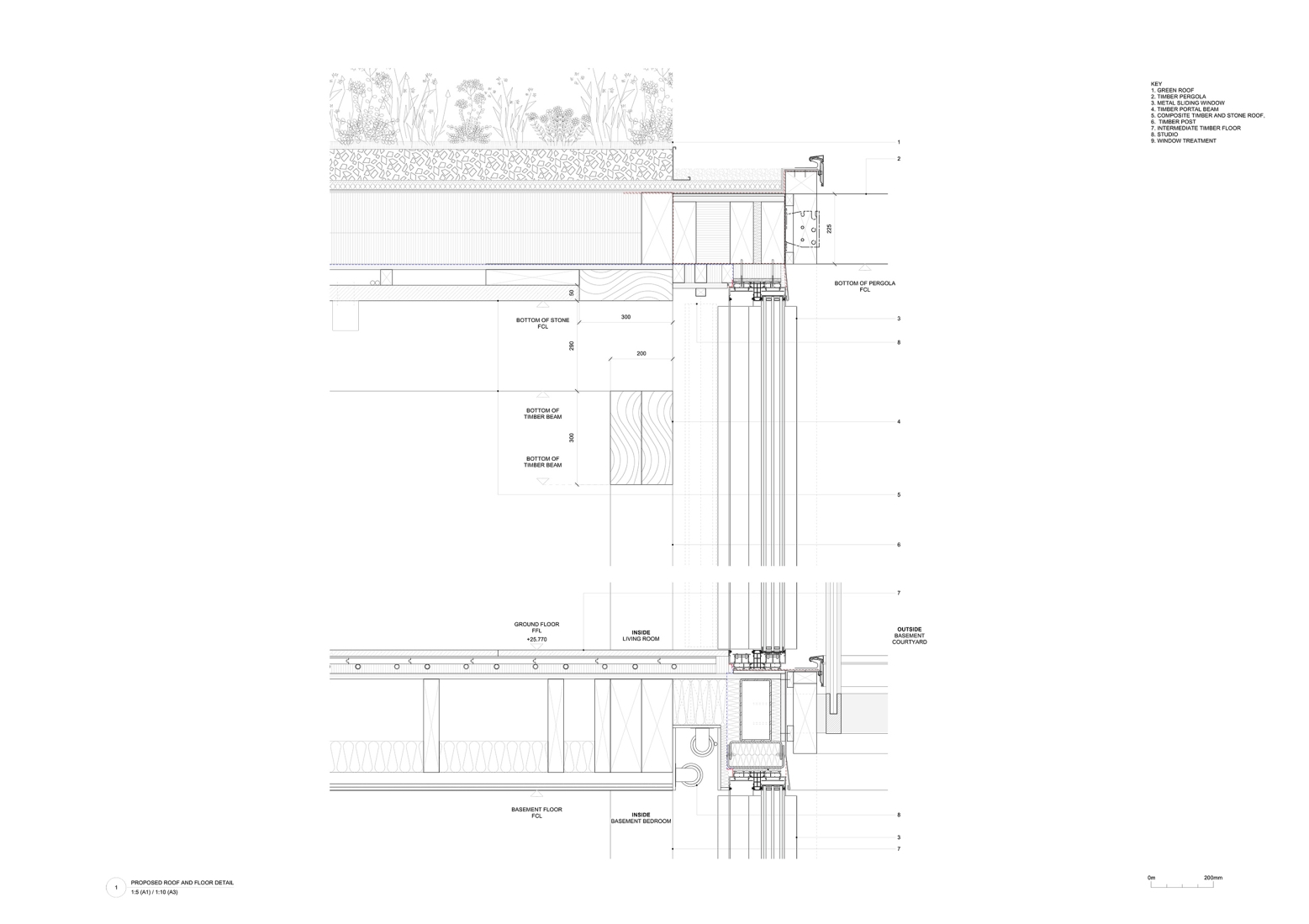
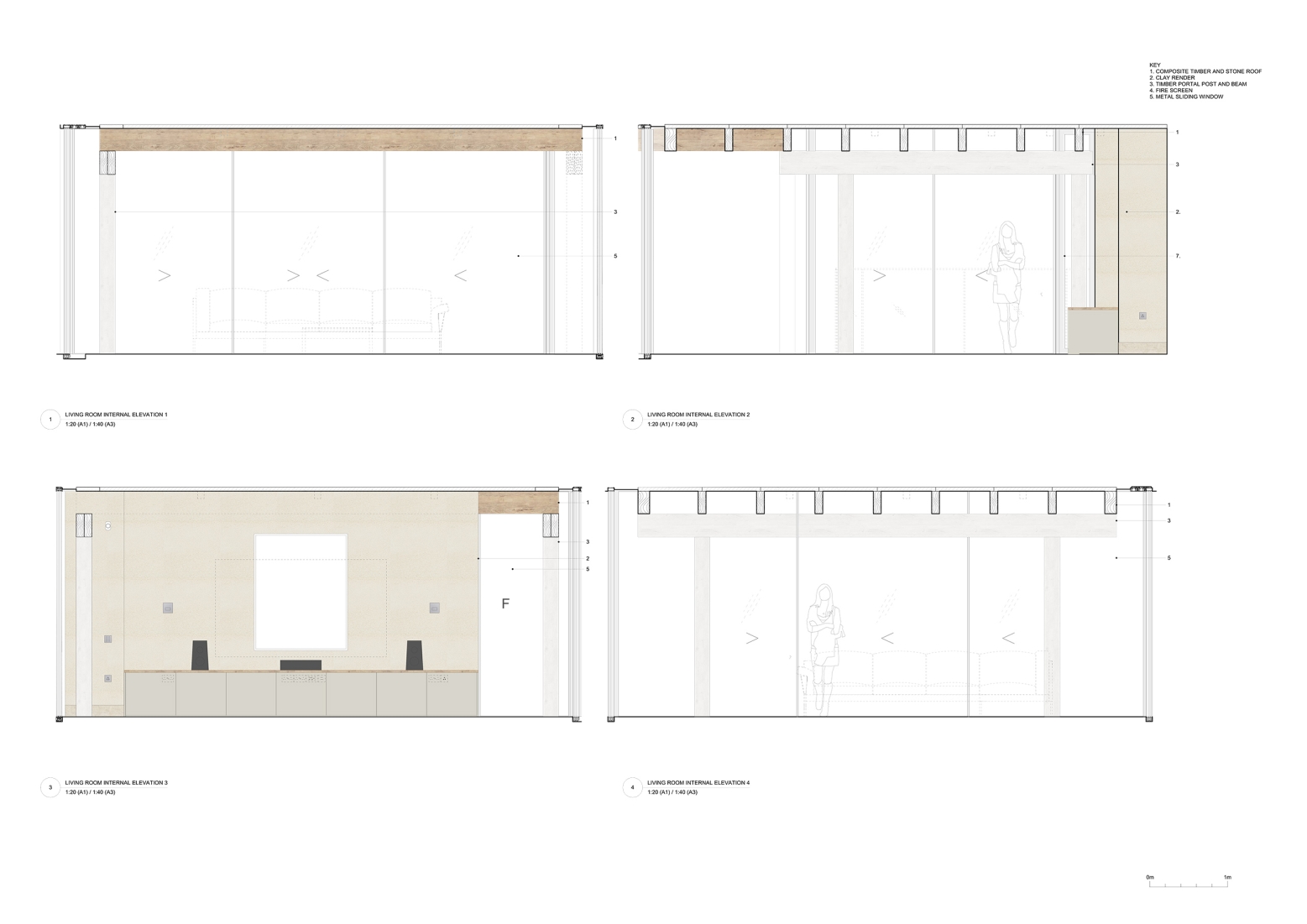
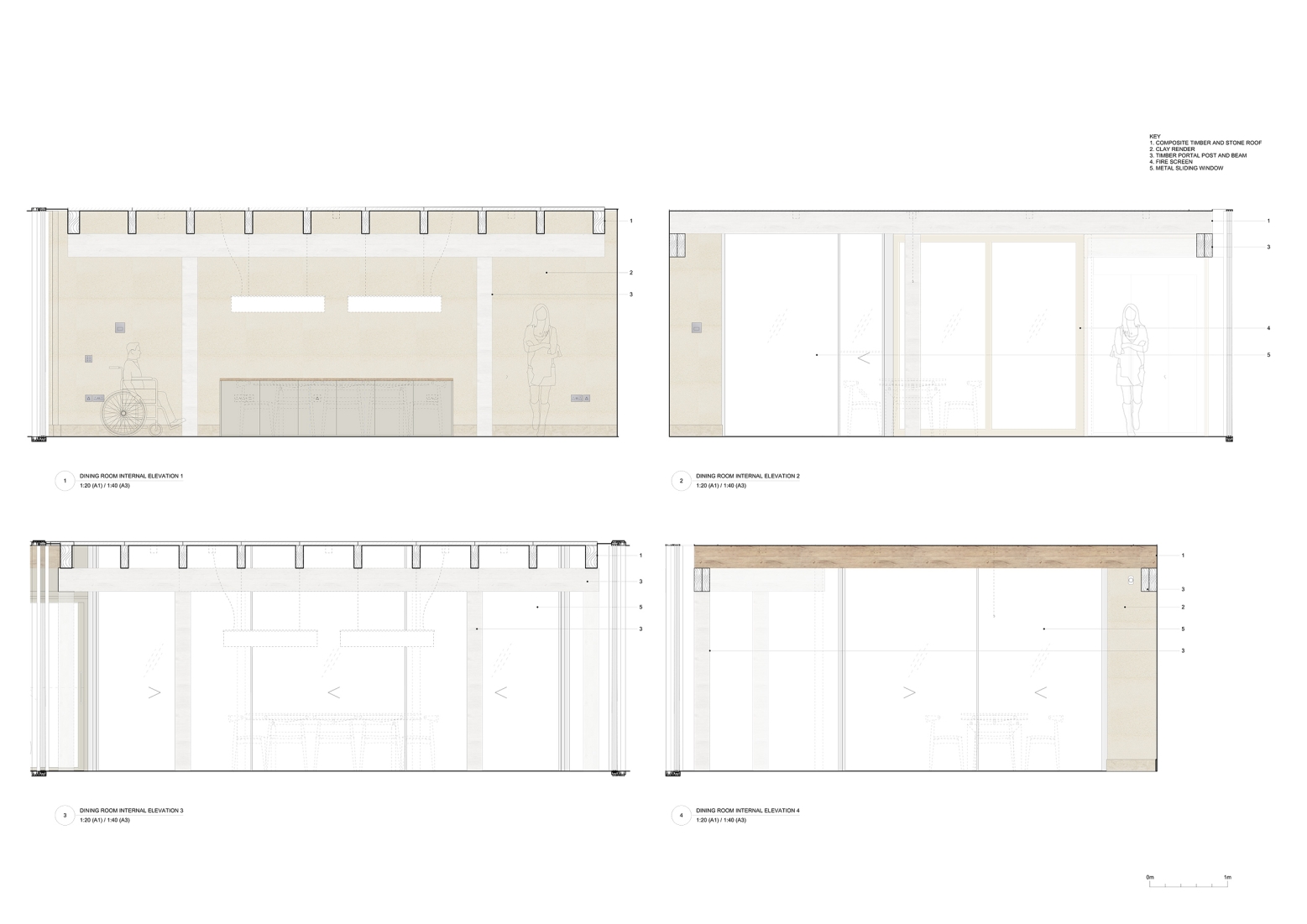
In the summer of 2020, t-sa were approached by a client in search of suitable land to build a new family home. The site needed to host a horizontal house that would be fully accessible. The client’s connection with Japan inspired them to seek a relationship between the house and the garden rather like the concept of engawa, a covered corridor running along the perimeter of traditional Japanese dwellings – Niwa in Japanese means garden. Additional aspirations included a house conveying texture, raw materiality and quiet atmosphere.
A derelict plot of land was selected in South London, at the end of a narrow, overgrown lane, which once hosted a light industrial business. Vacant for 10 years prior to the client’s purchase, the site had become overgrown with signs of informal occupation and remnants of industrial activity. The site boundary wall was in a poor condition, the site area, where not overgrown, had been covered by concrete and a small structure was located at the rear over the footprint of which a new outbuilding would be designed.
The proposal included the retention and reconstruction of the boundary wall and took advantage of the requirement to remove contaminated soil to provide a basement necessary to achieve the spatial brief on a site where building height was restricted due to adjacent properties. The house would be inhabited by a wheelchair user making accessibility integral to the whole building specification. Consideration was given to the size of spaces, height of furniture, operation of doors and windows, skirting heights and other protective elements.
From the outset, the building was conceived to have a light footprint and use natural materials wherever possible. Working with the Structural Engineer Webb Yates, a hybrid structure was developed consisting of an exposed timber frame and stone sheathing, minimizing use of steel and concrete. Slender glulam columns spanning both storeys rise to meet a network of layered beams, primitive in nature. These, in turn, support and work in tandem with a thick limestone ceiling providing thermal mass and rigidity. Light entering overhead through punctured sky-lights and a clerestory between stacked beams filters through soft curtains, producing a play of hard and soft shadows.
The house is considered a lightweight pavilion – a continuous series of open plan spaces interrupted by courtyards and gardens, forming a unique figurative shape that fits within as found vacant land. The connection between inside and outside is maintained through a glazed envelope creating a thermal enclosure in the vertical plane. Timber columns and beams are always proud of internal walls, which are treated with clay render and provide a soft backdrop to the structural network. The roof beams protrude towards the pergola which nearly touches the garden wall, creating spaces of privacy and tension filled with carefully selected planting. When the glazed walls are open, the limits of the house and garden fade achieving uninterrupted space. A small path in the garden leads to the new outbuilding, hosting a tranquil home office and guest accommodation.
The approach to sustainability was multi-faceted with the impact of each strategy carefully considered against the building as a whole. Beyond the use of naturally occurring, low carbon building materials, internal comfort is achieved with a careful balance of passive and active measures. A green roof provides both thermal mass and biodiversity gains, while clay render adds a textured, soft layer to internal walls while at the same time improving air quality. Other measures include high performance triple glazed windows, ASHP and MVHR systems.
Structural Design
Sustainability was at the core of the design proposal for this scheme. Working with a highly constrained brown-field site, the architecture was governed by a strict height limit, and a generally low rise property. This drove a demand to maximise natural light and exposure to the exterior to avoid creating a dark and gloomy scheme. Additionally, to make use of the site adequately required including a basement, which baked in a significant embodied carbon from the outset, driving the team to look for opportunities to offset this.
The introduction of significant glazing and lightwells could have driven a highly conditioned design, with high operational energy use due to high solar gains, but instead the design used a synergistic architecturally expressed structure providing thermal mass to manage operational energy demands. Typically, such thermal mass is provided utilising concrete, but instead the design team developed a first of its kind composite stone and timber roof to provide the desired thermal mass with minimal embodied carbon. By utilising the composite section, the structure is approximately 150% stiffer than the timber alone, allowing us to reduce the size of the glulam members, and providing a stripped back and structurally honest design. This is the first time that this approach has been used on a full-scale project. To further reduce the embodied carbon wherever possible the structure is entirely timber, including all internal structure.
This coordinated approach, between Architecture, Structures and MEP allowed for a passively ventilated approach that would not have otherwise been possible, reducing costs and operational carbon.
Webb Yates Engineers
Client’s View
When we decided to build a new home, it was at a pivotal moment in our lives. Living in a two-bedroom flat, we were preparing for the arrival of our first child and realized we needed more space to grow and thrive together. However, as we searched for a new home in London, it quickly became apparent how few options were available that met our needs—particularly because one of us is a wheelchair user. This lack of options ultimately led us to embark on the journey of designing and building our own home.
From the beginning, we knew we wanted a home that reflected our shared love of Japanese design. One of us is half-Japanese, and both of us are drawn to the simplicity, harmony, and connection to nature that defines traditional Japanese architecture. Choosing to work with Takero Shimazaki felt natural; his Japanese heritage and deep understanding of the local area made him the perfect partner to bring our vision to life.
Takero’s design captured everything we hoped for and more. Inspired by Japanese gardens, the house seamlessly blends indoor and outdoor spaces, creating a sense of flow and tranquility. Living here feels like a journey, with carefully crafted transitions between rooms and outdoor areas that encourage calm and connection. After the challenges of living in a dark flat during the lockdowns, it was important to us to have a home filled with natural light. This house delivers in spades—light pours into every corner, uplifting the entire space and creating a warm, welcoming environment for our family.
We were also drawn to the idea of an honest architecture that celebrates the beauty of materials. Takero, along with the talented team at Webb Yates, designed a home that features exposed stone and structural timber for the roof, showcasing the craftsmanship and raw integrity of these elements. The result is stunning: a home that feels timeless yet contemporary, with materials that invite touch and admiration every day.
Despite being located in the heart of London, our home feels like a secluded oasis. The design provides privacy and tranquillity, allowing us to escape the noise of the city while remaining rooted in the local community. It’s a sanctuary where we can relax, connect with nature, and create a lifetime of memories with our growing family.
The house has been truly life-changing in its accessibility. Every detail has been thoughtfully designed to allow a wheelchair user to move easily through the space, with features like step-free access and a smart, intuitive layout. It’s a home that gives our whole family the freedom to thrive. To us, it’s a perfect example of how great design can create inclusive spaces without sacrificing beauty.
This home has truly transformed the way we live. It’s not just a place to call home; it’s an embodiment of our values, passions, and aspirations. Takero Shimazaki and the entire team brought our vision to life with such sensitivity and creativity, creating a space that is functional, accessible, and profoundly beautiful.
t-sa Team: Takero Shimazaki, Cécile David, Paolo Emilio Pisano, Joshua King
Photographs Anton Gorlenko, Felix Koch